Garmin Fenix 6 Review, 6x 6s Pro
 This detailed Garmin Fenix 6 Review looks at the smartest, most functional, outdoors and sports watch that will excite adventurers, ‘proper’ athletes and gadget-lovers alike. In every respect, the Fenix 6 is the flagship sports watch for the entire industry with only the Apple Watch 6 matching or exceeding it for ‘smart’ functionality outside of sport.
This detailed Garmin Fenix 6 Review looks at the smartest, most functional, outdoors and sports watch that will excite adventurers, ‘proper’ athletes and gadget-lovers alike. In every respect, the Fenix 6 is the flagship sports watch for the entire industry with only the Apple Watch 6 matching or exceeding it for ‘smart’ functionality outside of sport.
In brief...
-
Price - 88%88%
-
Apparent Accuracy - 89%89%
-
Build Quality & Design - 92%92%
-
Features, Including App - 99%99%
-
Openness & Compatability - 98%98%
Summary
 The Garmin Fenix 6 series watches carry over the aesthetics from the 5-Plus series but in reality, Fenix 6 is a fully refreshed piece of hardware that also takes big steps forward in the features it offers. The true ‘outdoors’ and ‘sport’ features have been improved a little but the most noteworthy features include larger screens, solar charging in some models and better battery life. Everything from the earlier 5-Plus series is now standard on Pro models and above like PulseOx, Garmin PAY, Music and Maps.
The Garmin Fenix 6 series watches carry over the aesthetics from the 5-Plus series but in reality, Fenix 6 is a fully refreshed piece of hardware that also takes big steps forward in the features it offers. The true ‘outdoors’ and ‘sport’ features have been improved a little but the most noteworthy features include larger screens, solar charging in some models and better battery life. Everything from the earlier 5-Plus series is now standard on Pro models and above like PulseOx, Garmin PAY, Music and Maps.
For once, it REALLY is a case that THE BEST has got better.
The sports, smarts, activity, physiology and outdoors features are immense in their breadth and depth, with a price that reflects that. Nothing can beat the Fenix 6/945 with the sports features and even the Apple Watch probably won’t have that many more smart features that YOU might want.
The Fenix 6’s screen quality, usability of the watch’s menus and oHR/GPS accuracy are all that lets it down slightly.
Pros
- I can’t think of any meaningful & appropriate outdoors features that are missing
- Contains every ‘proper’ triathlon feature and more besides
- Revamped hardware – faster than the Fenix 5 Plus
- Peak battery – it’s got better battery than the 5-Plus and is so good that I can’t see how it can materially improve from here in future versions
- Contains several new, but peripheral, physiology features
- Music support recently extended beyond Deezer and Spotify to include AmazonMusic
- Awesome connectivity to external sensors and openness to 3rd party sites
- The top-end 6x Solar adds at least an extra 10% longevity to all battery modes
Cons
- Price
- Whilst ‘OK’, oHR and GPS accuracy need work to satisfy those of you with a taste for ‘great’ or ‘high’ accuracy
- Uninspiring screen colours and quality
- The menu interface has improved a little but is labyrinthine in its complexity…ie you can’t find stuff.
Let’s not get ahead of ourselves and dismiss what the Fenix 6 can also deliver with its smart functionalities, as it also supports; onboard payments, apps, solar charging (6x Solar), music, mapping, numerous connected features and the vast array of sporty and outdoors features found in the earlier Fenix 5 models.
Must Read: Garmin Fenix 7 Review
BLACK FRIDAY-CYBER MONDAY PRICING – HERE
I’ll start with some general comments to help in your purchasing thought process before returning to go through many of the key aspects of the watch in much more detail. The review is very long so either skip to your favourite section or grab a very large coffee and chill for 30 minutes of tech goodness.
Headline
The key differences of the Fenix 6 Series compared to the earlier Fenix 5 Plus models are that the new Fenix 6 has more smart features, a few more true sports & physiology features and upgraded internal hardware components. It looks superficially identical to the Fenix 5 Plus but it isn’t.
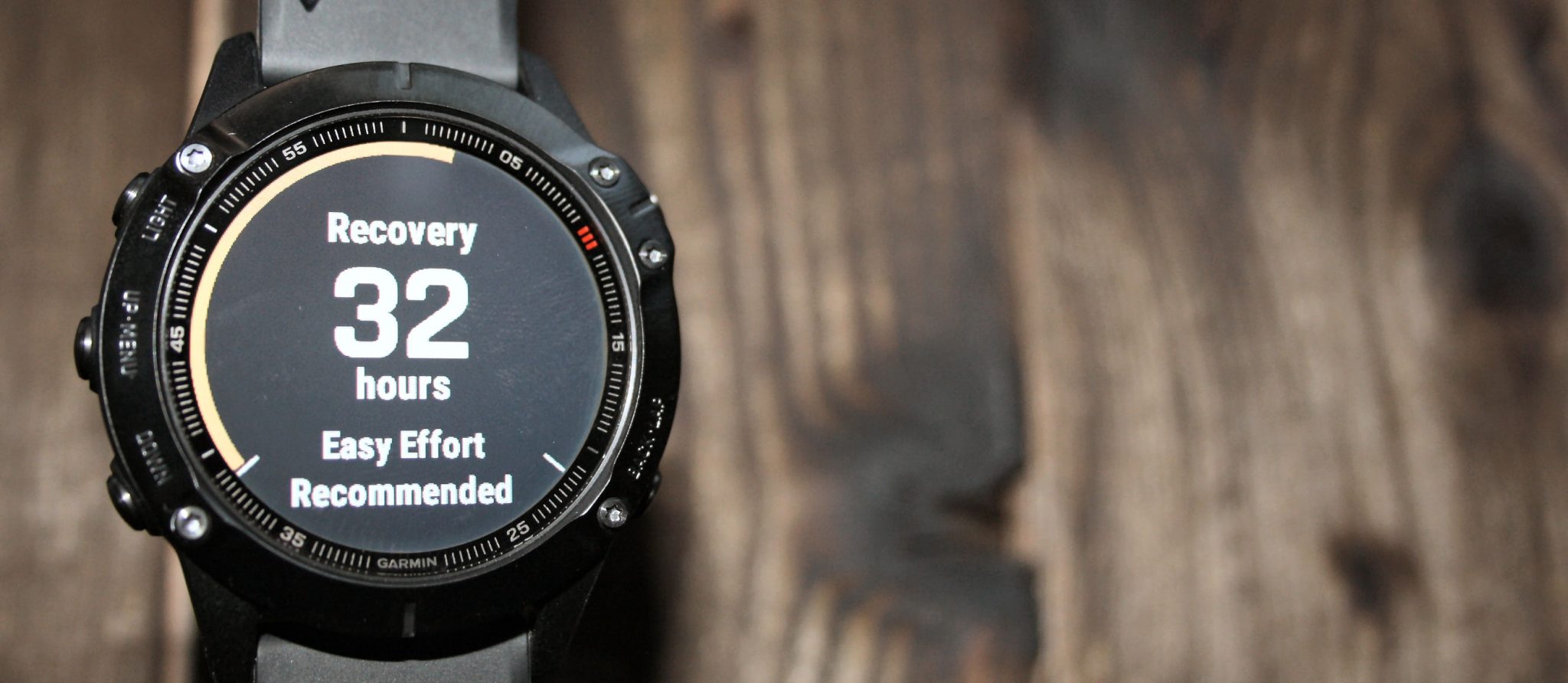
Why You Would Buy The Fenix 6?
You buy a high-end Garmin watch primarily because it is jam-packed full of SPORTs & OUTDOORs features, many of which you probably won’t even find in the menus – let alone use them. That doesn’t matter that much, as the features that you DO need will almost certainly be included…somewhere. Even if your must-have feature is missing there will be a CIQ app that can be added to the watch for free.
But those statements were also true of the Fenix 5 Plus. So, really, I suspect that, like me, many of you who upgrade to the Fenix 6 will simply do so because ‘they WANT the best‘, whilst kidding themselves that the even more expensive Garmin MARQ EXPEDITION doesn’t exist 😉 There are real reasons to upgrade too, of course, and these are mostly the hardware improvements which are an improved processor, screen size and battery…so the Fenix 6 works ‘better’ and will work for longer. There are also lots of smaller reasons that we will cover in subsequent sections like the improved menu system and new sports features like PacePro.
Why You Would NOT Buy The Fenix 6
Let’s try these…
- Cost
- You can still get an awesome battery life elsewhere by carrying a battery pack/charger
- The screen resolution is still ‘meh’, it doesn’t generally look good with a suit.
For a start, you do NOT NEED a Fenix 6 for a week-long expedition or a triathlon and, let’s face it, there are perfectly capable, good-looking sports and outdoors watches AND APPS at less than half the price of the Fenix 6.
If you want something cheaper then consider a Suunto (9 or the smaller Suunto 5) or Polar Vantage (review) and if you want something smaller but otherwise very similar then go for the Garmin Fenix 5S Plus (review) or indeed any of the Fenix 5 Plus range (make sure it is a PLUS model you get)

Detailed Garmin Fenix 6 Review
OK. Let’s crack on with the review. I’m going to miss a lot out here but I’m also going to cover a lot of ground. I’m certainly NOT going to walk you through the menus nor am I going to show you photos of every component and screen from every angle. Neither am I particularly going to tell you how to do stuff with the Fenix 6…there is a manual or video somewhere for all of that kind of thing.
What I am going to do is look at different aspects of how you will interact with the Fenix 6 and describe my opinions and experience with those. I’m thinking things like RACE USAGE, DESIGN ISSUES, FOLLOWING A PLAN, OUTDOORS USAGE, TRAINING USAGE, GETTING INSIGHTS INTO PERFORMANCE and ASPECTS of SMARTS & CONNECTIVITY but I’ll also do the standard bits like GPS accuracy, oHR accuracy and a short unboxing.
So this is more of a “What to expect” review…which I hope will be more useful (comments below if not…I aim to please)
Detailed Garmin Fenix 6 Review – Unboxing
You get the watch, a manual and a bespoke USB charger. That’s it.
 The bespoke connector works fine for general charging and fits either way around. The main issue I have is that when there is sweat or pool water inside the port (hole) on the watch then the Fenix often fails to make a connection to my PC. The solution is to blow into the watch port to get the sweat out or use the Connect Mobile app or WiFi uploads. Apparently, you can also buy a tiny rubber cover for the watch’s port, though some people report this increases corrosion.
The bespoke connector works fine for general charging and fits either way around. The main issue I have is that when there is sweat or pool water inside the port (hole) on the watch then the Fenix often fails to make a connection to my PC. The solution is to blow into the watch port to get the sweat out or use the Connect Mobile app or WiFi uploads. Apparently, you can also buy a tiny rubber cover for the watch’s port, though some people report this increases corrosion.
Garmin Fenix 6 – Outdoors Usage
Let’s look at maps and some other features used in hiking. Before we start off I’d say that the Fenix 6 must be a near all-encompassing solution that covers just about every feature you would need. HOWEVER, what it lacks is some sub-areas is USABILITY.
Garmin Fenix 6 Review – Hiking
You will probably mostly use the Fenix for
- Waypoint Navigation & navigating by compass (it’s a magnetic compass, as used in Sight & Go Mode)
- Navigating over a predefined course/route (from many sources including FIT/GPX, BaseCamp or Garmin EXPLORE)
- Track Back over your route OR being pointed back to your start point.
- Route Creation – Intelligent ‘live’ navigation like your car’s satnav
and from time-to-time, you will find the following hiking-specific features useful to better appreciate your environment from every perspective
- Live Weather including barometric-based storm alerts, Sunset & Sunrise times, Atmospheric pressure, temperature
- ClimbPro + Elevation profile when following a course/route
- Your Latitude Longitude based on GNSS
- Ascent/Descent/3D speeds
- There are also hotkeys and ‘Area Calculation’
Garmin Fenix 6 Review – The Compass
Within the NAVIGATE profile, you can choose to ‘Sight and Go’. This effectively turns the FENIX 6 display into a magnetic compass.
 Other outdoors and sports watches might have a GPS-based compass, which is OK, but the GPS-based compasses don’t always point in the right direction when stationary unless used in conjunction with an internal accelerometer. That can all get quite complicated and it must just be easier to have a magnetic compass, as with the FENIX.
Other outdoors and sports watches might have a GPS-based compass, which is OK, but the GPS-based compasses don’t always point in the right direction when stationary unless used in conjunction with an internal accelerometer. That can all get quite complicated and it must just be easier to have a magnetic compass, as with the FENIX.
You can calibrate the compass whenever you like and set NORTH to be true North, map North or magnetic North. If you choose TRUE North then the WMM model is used to set the compass declination. Normally this makes little difference unless at high lat/longs.
Garmin Fenix 6 Review – The Altimeter
The altimeter appears to be a barometric altimeter with DEM- & GNSS-based adjustments. Once it gets a GNSS fix, it performs a look-up – the onboard DEM maps ‘know’ the altitude/elevation of that GNSS point. In extreme situations the elevation for a specific point might not be known such as when you are halfway up a cliff face and so incorrect GNSS positioning readings can lead to incorrect elevations. I would imagine that Garmin temper any errors here with the barometer readings. It’s also possible that old-hat ,GNSS-based, direct elevation calculations could be made as well.
Cutting to the chase, this means elevation should be nearly always accurate!!!
Garmin Fenix 6 Review – Waypoint Navigation
Navigating electronically via waypoints is probably the next step up from using a paper map.
To do this you will normally have determined the points you want to navigate to before you start out and sync’d them to your FENIX. As you navigate, your FENIX points you in the right direction to the next waypoint. That’s kinda OK, but there might be a lake in the way. If used in conjunction with a real map then this can be a fun way of getting from A to B rather than simply following a pre-defined, digital route.
Special Feature – Maps
 All of the Fenix 6 PRO models (and above) now have inbuilt global full-colour TopoActive maps. I seem to have free maps for all the regions, this might not be the case if you buy your Fenix 6 elsewhere…check.
All of the Fenix 6 PRO models (and above) now have inbuilt global full-colour TopoActive maps. I seem to have free maps for all the regions, this might not be the case if you buy your Fenix 6 elsewhere…check.
It’s mostly the addition of these routable maps that distinguish the changes to outdoors/navigation functionality over what the Fenix 5 (non plus) offered, which had basic navigational abilities such as breadcrumb routing and a compass.
The addition of maps is moving the Fenix 6 forwards in broadly 2 ways: a more complete routing experience; and openness to smarter, location-based CIQ apps.
Superficially you look at the maps on the F6 and go…’meh, it’s a bit small’. And it is. I suppose you have to set your size expectation by the physical limitations of what a watch can be. However, as you delve deeper you soon discover that the Fenix’s maps are considerably more powerful than you will get from competitors. Just starting off by looking at MAP THEMES gives you a flavour, here you can display marine, Popularity, resort ski, dark or high contrast themes. Different colours/layers are displayed on the map which might just change the colour of the map OR that different colour might mean something eg the popularity of the trail/road you are on.
 The most interesting new feature here to me was the visibility of the HEATMAP on the map which might give you some comfort in visibly knowing that you are either off or on the beaten track, whereas the HEATMAP was previously used invisibly by the Fenix to intelligently route you somewhere.
The most interesting new feature here to me was the visibility of the HEATMAP on the map which might give you some comfort in visibly knowing that you are either off or on the beaten track, whereas the HEATMAP was previously used invisibly by the Fenix to intelligently route you somewhere.
Talking of routing, I’m not that impressed by how you can select a point on the map and then be routed to it. Sure the routing is good but the act of creating an endpoint is extremely convoluted. I’m not sure how else I would expect to do it but it’s convoluted nevertheless. Once the points are on your watch then it’s fine…it’s just creating them in the first place and you would be better served by using the Garmin EXPLORE app or BASECAMP. But then I suppose I would complain about having to use an app and then why couldn’t I just use a smartphone for the whole process (there’s no pleasing some people!). The point is…maps and navigation on the Garmin Fenix are not perfect.
Better Maps?: Try TALKYTOASTER – knows his stuff, some free stuff and some reasonably priced stuff USA, Eu and other global maps

A More Complete Routing Experience
The ‘more complete routing experience’ is a kinda obvious statement. Previously there were NON-intelligent breadcrumb trails and now there is all the intelligence of a car’s satnav to re-route you over proper roads & trails when you make a wrong turning. Overlay on top of that all of Garmin’s pre-existing functionality around compasses, round trip routing, barometric+GPS altimeters and you soon start to realise that you have a pretty cool outdoors tool. Overlay specialist navigational CIQ apps like TRAILFORKS then cool becomes super-cool.
POIs of many types are also effectively overlain onto the map. Just like with your car’s satnav, you can navigate to the nearest Bank should you so desire. I would say that the POI-based navigation works well enough and one of the first things you might do is add a custom POI as your ‘home’ or your hotel in a new city. The former helps auto-calibrate your starting elevation and the latter avoids getting lost 😉

The routing capability of the device is GREAT. But it is let down somewhat in practice
- A relatively small wristwatch is not the best size for route navigating at speed, especially when it is further away from you – like on a bike’s handlebars. But in the absence of a smartphone or other device, it’s better than nothing.
- The button interface works WELL on the REST of the watch’s functions but with navigation, I find the experience a little too contrived. A touch screen that supports pinch and zoom would DEFINITELY be better (providing it worked). However for occasional and more recreational-type navigation then the 5 buttons offer a sufficiently useful interface.
- The device is not the fastest at responding to your speed. So if you are walking or jogging then it reacts quickly enough but once you’re going faster, say cycling, then it’s not great. I wouldn’t use it as a BIKENAV over a long and complex route.
- Similarly, the speed of zooming in/out and panning on the map is often WAY TOO slow
Garmin Fenix 6 – Sports Usage

On a day-to-day basis you could interact with the Fenix 6 FOR SPORTS in these main areas: Organising training, executing training and analysing training results. And you will be doing that for swimming, biking, running and many more besides.
On the whole, Garmin has all of this SPORTS USAGE nailed and that’s a good job as you are spending quite a lot of money on an adventure sports watch. There are a few chinks in what it does NOT do well and that is the deeper analyses that sporty data nerds like me do to pretend we have found a way to make ourselves a little bit faster, a little bit more quickly than you. But don’t worry, you’ll probably have better genes than me which will more than compensate 🙁 :-). Then there is the structured workout creation piece that Garmin does better than almost anyone else but which still needs to be improved.
Finally underpinning all of Garmin’s awesomeness in day-to-day usage, we have the usability issues (next section) which drag down the whole experience a little more than it should.
OK, let’s put some flesh on that.
Organising Training
ie Scheduling workouts, planning the detail of a workout or getting that from a 3rd party plan.
You might create and schedule your own workouts or follow a plan. The cool thing now is that Garmin has just changed how they mix your workout ‘events’ with life’s other events. So you now magically have what looks like to me to be a unified calendar. So today I have a “W03D6 – Build Run” just allocated seemingly to “anytime today” (which is great) and there’s also ‘Coffee with Jim at 11:00’ and ‘Zumba at 18:30’ which is strange as I don’t do Zumba, so I’m guessing we have a family calendar somewhere on Google that Garmin has magically commandeered.
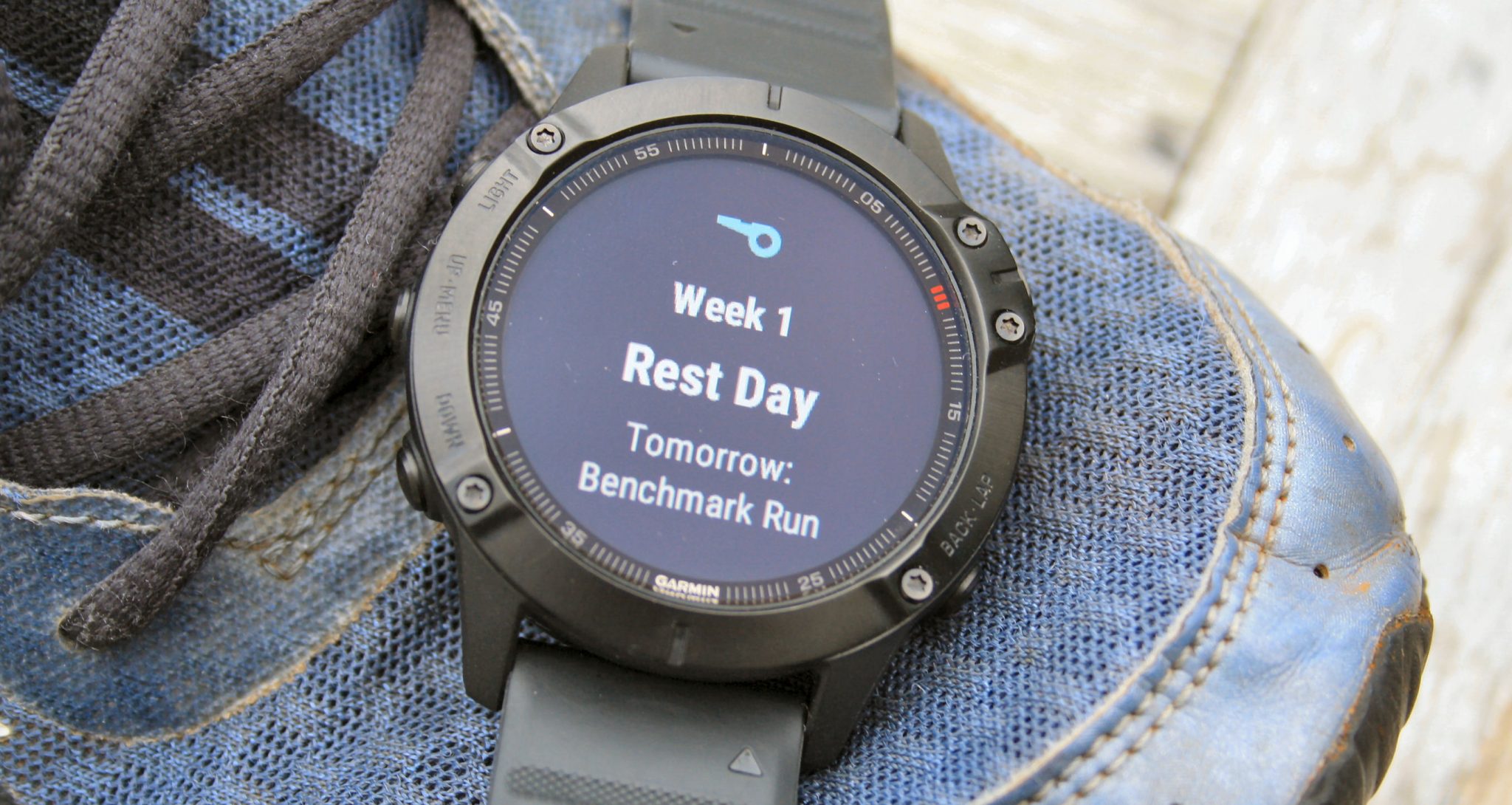
It gets better.
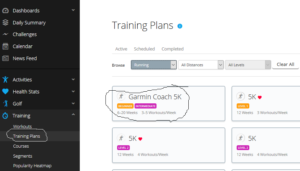 Training Plan functionality is embedded within your Garmin Connect platform and you can get access to a wide variety of running, cycling and triathlon plans…for free. You pretty much have to follow these multi-ability plans as-is but now Garmin is gradually starting to expand a new tranche of ADAPTIVE PLANS called GARMIN COACH. Again you find this in the Training Plan area of Connect but these adaptive plans change and morph as your week progresses or regresses due to other commitments. “Can’t run today?…the plan automatically takes care of it tomorrow.
Training Plan functionality is embedded within your Garmin Connect platform and you can get access to a wide variety of running, cycling and triathlon plans…for free. You pretty much have to follow these multi-ability plans as-is but now Garmin is gradually starting to expand a new tranche of ADAPTIVE PLANS called GARMIN COACH. Again you find this in the Training Plan area of Connect but these adaptive plans change and morph as your week progresses or regresses due to other commitments. “Can’t run today?…the plan automatically takes care of it tomorrow.
There are also external providers of more advanced-level plans and you will find that, as we move into 2020, Garmin’s new training plan infrastructure will make it MUCH easier for the likes of TP and Final Surge and other to start more easily delivering their plans to you.

For those of you who want to create and schedule your own complex, structured workouts then Garmin have one of the best workout creation tools. They have had it for YEARS. So it works. The only UNcool thing about it is that it still cannot support the creation of alerts for running power. Final Surge has figured out how to create running power based workouts for the Garmin environment but because the alerts don’t work all you get are the time chunks with a textual alert on the watch telling you what you have to do.
Will that be sorted out in 2020? Maybe.
You can also set a wide variety of training targets which could be: racing a particular STRAVA segment (via CIQ); racing a virtual pacer; racing a previous effort of your own or from someone else; training to interval targets created on the watch; and more besides
Summary: Generally Awesome.
Training or Racing – Garmin Fenix 6 Review
The Garmin Fenix 6 is awesome for one of it’s primary purposes…training and racing.

There are subtle nuances of how the Fenix 6 works across many fully customisable, sports profiles; essentially what you need are the means to manage and control your effort according to whatever ‘goal’ you might be trying to achieve that day. That sounds simple but Garmin’s solution is a highly involved and comprehensive one. In simple terms, you need to be able to see the appropriate metrics and be alerted when stuff happens…or should happen…or doesn’t happen.
- A metric is a measure like heart rate. But it could equally be power or cadence or stroke rate or distance or laps or elapsed time or a Firstbeat metric like ‘Performance Condition’. But it could also be those over the entire workout, over the last manual lap or automatic lap or over a ‘segment’. It could also be a mathematical variation on one of the metrics such as %HRmax or which HR zone you are in or STRAVA’s relative effort (also based on HR) or your normalised power for the current lap. ie metrics get real complex, real quick. To cut a long story short, your Garmin Fenix 6 will be able to handle all of these and MORE. Admittedly the competition is generally fairly close to offering the breadth that Garmin does…fairly close.
- To some degree, there are also metrics that can be used to help you work on technique like those found in RUNNING or CYCLING DYNAMICS.
- Your Garmin Fenix 6 will also support weird stuff too like native SmO2 (muscle oxygen) and more unusual metrics like those for running power which can be incorporated, with restrictions, through Garmin CIQ apps & data fields.
- The alerts happen when one of your sports metrics reaches a certain threshold. That could be a certain %age of your FTP or it could be a time threshold where you might want to be alerted (reminded) to take on hydration or simply alerted that your 5 minute effort period is over.
- You can set these alerts manually for a workout or they can be automated as part of the workout/plan that you are following. Your alerts can be a vibration, an audible beep or even audio prompts through your Bluetooth earbuds.
- One of the most commonly used alerts will be the lap alert and you can configure what is shown eg average pace and average hr. And you can change that for a different sport profile as well as manually taking a lap.
- Group training and security issues are handled by the connected features of GroupTrack, LiveTrack and Assistance.
There are some things missing like hydration. That’s because no hydration sensor exists (yet) to measure your hydration state but when it does the Garmin CIQ apps WILL easily be able to incorporate its data. Having said that there ARE ways to measure and estimate your water intake from apps like OZMO and a new hydration/nutrition logging feature on Edge devices may well make its way to the Fenix 6 soon.
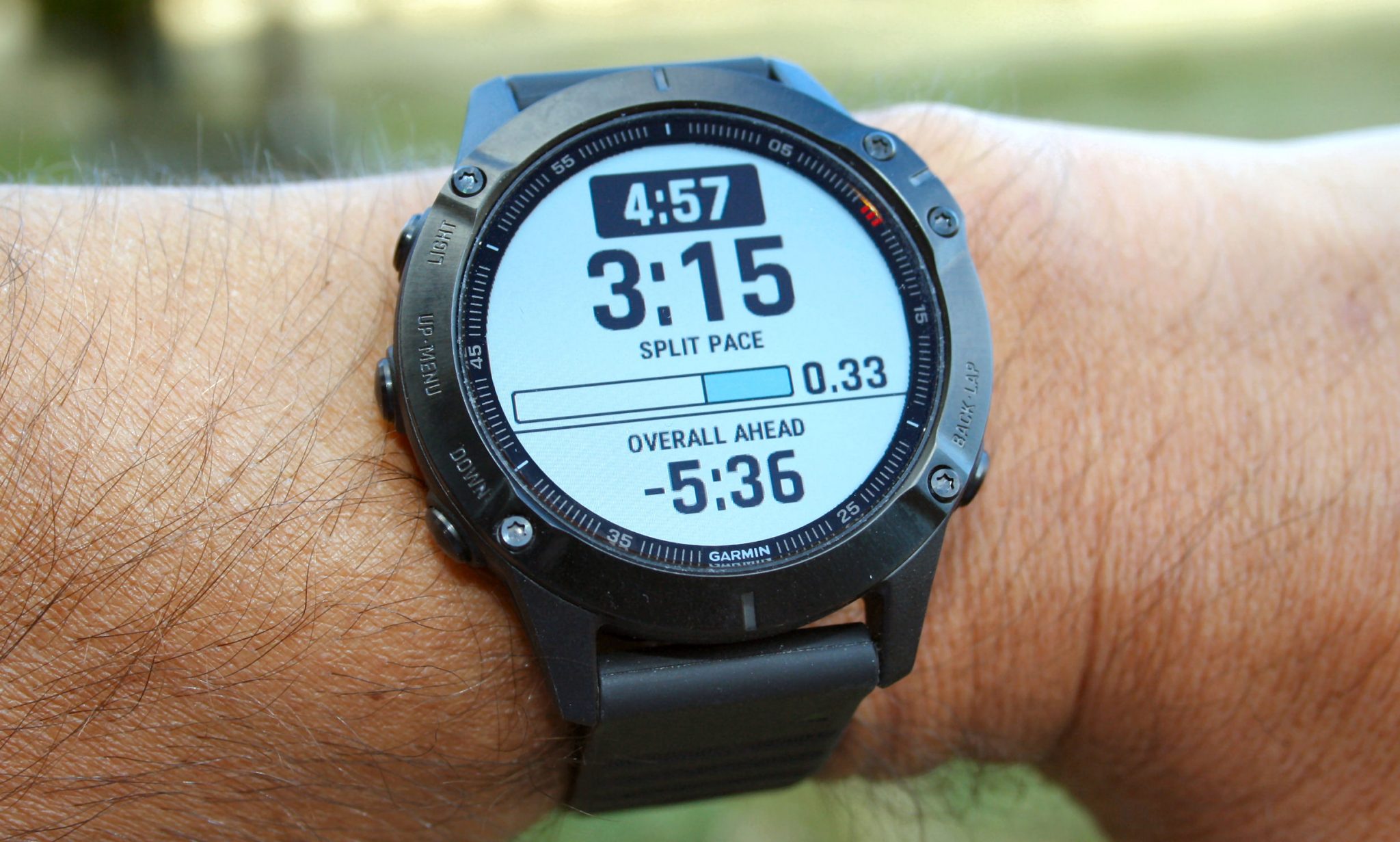 Issues do exist with custom data fields (eg running power) which cannot have alerts set on them by the native Garmin environment and so, in the case of running power, a 3rd party has to deliver that functionality via a CIQ app.
Issues do exist with custom data fields (eg running power) which cannot have alerts set on them by the native Garmin environment and so, in the case of running power, a 3rd party has to deliver that functionality via a CIQ app.
There are then some minor issues with integrating apps with how you want to see other screens during your workout and, furthermore, a limit of 2 CIQ data fields per workout.
Much of that will be irrelevant to 90% of you reading this…but that leaves a fairly big 10% who will be impacted. But it’s a relatively minor criticism as competitors generally fall well short of what Garmin can do. Yes even Apple, they’re not so wonderful (yet) when it comes to sports.
A couple of final points here that will be important to some of you. YES, you can create simple intervals on-the-fly rather than needing to follow a workout you have created and sync’d beforehand. and YES you can also set targets for your workout like distance/time and pace – although having said that I am a little surprised that it does not seem to be possible to set a TRAINING EFFECT target on-the-fly based on Firstbeat data, although TRAINING EFFECT can be displayed as a cumulative metric throughout your workout. Yes, you can race a previous activity of yours or someone else.
You can also customise your screen layout. There are ways to get more than 4/6/8 fields (6s/6/6x) per screen using CIQ apps and you can even get colour-coded data fields and unusual data fields like ‘dials’ both from Garmin’s own creations and those of 3rd parties (via CIQ)
 Training or Racing – Triathlon Specific
Training or Racing – Triathlon Specific
If you are taking tri-tech seriously then you need to think closely about this section.
Garmin is uniquely awesome in properly supporting ‘any triathlon’ or, more correctly ‘any multisport event’. If you only ever plan to do OWS+Bike+Run then other vendors come into the mix. Otherwise, you may well need these IMPORTANT tri features:
- Ability to make a custom multisport profile for a pool swim, cross-tri, Otillo and AquaBike
- Transitions – which can be enabled or disabled
- There is a 5 sport limit to a multisport profile BUT there is a REPEAT function which nicely works around this limit eg for BRICK workouts
- If you are going to take triathlon seriously then if you think about it, you will need most of these features at some point and no other vendor delivers them anywhere near as well as Garmin. If someone tells you otherwise then they are wrong. There are ways around all of the above issues with other vendors’ triathlon watches but it will typically boil down to a ‘faff’ when you least need a ‘faff’
Training or Racing – Cycling Specific
The Garmin Fenix 6 reviewed here has most of the features found on the top-end Garmin Edge 530-830/1030. Although the Edge 530/830 have recently had some CP and nutrition functionality added that I’m surprised is not on the Fenix 6. The bottom line is that a wristwatch is far from a perfect format as your main cycling computer, even in a race you should use a head unit IMHO.
The main cycling-specific strength of the Fenix 6 comes from its compatibility with a very wide range of sensors that include: ability to ‘cast’ your workout live to a Garmin Edge head unit; compatibility with Varia radar and lights; spd+cad sensors; FYI: the best power meter solution for entry-level cyclists with a bit of cash is likely to be Favero ASSIOMA pedals; Varia Vision H.U.D.
Don’t forget many of the traditional Garmin bike features that are supported like power/cadence alerts and race planning pacing support through racing previous efforts or modelled efforts through BestBikeSplit #CleverStuff.
Training or Racing – Running Specific
Well, you’ve got a metronome and Garmin Running power or STRYD support (buy one). There’s obviously much more than that and here are some run-specific highlights
- HR caching and running dynamics on the HRM-TRI (awesome product…buy one)
- treadmill support
- cadence from the wrist
- Improved race predictors now from Fristbeat.
- Performance Condition is shown about 6 minutes into a workout…+5…go for it, -2 ease off.
- LTHR/LT2 automatically updated
Training or Racing – Swim Specific
Usage Tip: Openwater and pool swim profiles are both available with stroke detection. Openwater has GPS enabled and you can set a custom pool length when using a pool. If you use an outdoor pool you use pool mode.
For the first time, the Fenix 6 has oHR on the wrist enabled for swimming activities…yay! It’s not as accurate as an HRM-TRI though.
Rather uniquely Garmin allows you to follow complex structured SWIM workouts, like this…

The swim functionality is pretty awesome and comprehensive enough for me. In my opinion, the stroke detection algorithms are now very good and give a high degree of accuracy and the onboard accelerometer detects when you push-off from the end of the pool. If you are lane swimming with other people and you stop or change your stroke then your Fenix 6 won’t be able to ‘see’ that and your stats will be impaired.
The swim metrics are good and include distance, pace, stroke count/rate, lengths, calories and SWOLF. These metrics are included in many non-Garmin watches these days but Garmin have additional, unique swim functionality with DRILL LOGGING and there are also extra functionalities built into rest periods between sets where, for example, you can have a countdown timer to the next rep. AFAIK these are unique to Garmin
Even, simply, how the end-of-interval works. With Garmin, it correctly takes you to a (configurable) rest period but every other tri-watch takes you to the next ‘active’ lap. It’s simple things like that which grow on you and eventually make you love the Fenix 6.
After you have finished you can send your swim data to swim.com or other sites for more insights.
Summary: Market leading tri greatness from Garmin. Improvements can still be made at the peripheries
Analysing Training – Detailed Garmin Fenix 6 Review
Your analysis could be something as simple as just seeing how far you’ve run or you might want to see if you eeked out every last piece of W’ left in your cycling tank up that last climb. The analysis could also be JUST the workout you’ve done or it could be to look at the cumulative effect of your training on your current readiness to train. You might want to analyse the data or you might want your coach to analyse your data.

With just those 3 sentences you can see there is a lot of complexity for a little watch to handle. And Garmin is torn here between providing a LOT of analysis on the watch when, in reality, the watch is not a great size format on which to do the analysis. Set against that is the fact that you have just finished your workout and you want to look at it NOW…one thing is for sure, your watch is on your wrist so its presence and potential usefulness are timely for analysis.
Well, the Fenix 6 is surprisingly good at addressing many, but not all, analysis needs. And what it can’t address it can certainly let you send your data ‘somewhere else’ so that ‘someone else or you’ can analyse away to your heart’s content.
Analysing Training – Key Post-Workout Stats
Garmin nailed this a few years ago. There are lots of nails in it now. You get ALL the basic info you need like a map of where you’ve been, average cadence, ascent, descent, load, training effect (Ae An), time in heart rate zones, laps, intervals, elevation plots and more. You can look at that info for any historic workout on your watch.,
Note that I highlighted ‘load, training effect (Ae An)‘. If you are new to a high-end Garmin watch then these stats are the start of where it gets interesting for you. Garmin incorporates many of Firstbeat’s physiological stats on the watch and these three are just the start.

Analysing Training – Physiological Markers
The Forerunner also determines your VO2max and LTHR levels for cycling and running as well as trending them over time. they can be used to see how your training is progressing and at what levels you might be able to perform over extended durations. But these ‘absolute’ levels of your physiology are then also used to score activities and model quite complex things like your future readiness to train, recovery levels and race predictions.
So you will see a ‘Recovery Time’ calculation at the end of your workouts and this is the amount of time you should wait until you perform your next HARD workout. Come back in 2 hours and your recovery time should have changed by 2 hours, so you see these types of physiological markers are not linked to the workout and there is a whole section of stuff where you can analyse the ‘state of you’ and this includes things like whether your fitness and load are increasing and if your load is optimal.
Analysing Training – The Garmin Connect Platform (web + online)
Your data is sync’d back to the Connect platform at some point and it’s pretty much the same sort of stuff that’s on your watch but just in a bigger format, perhaps you could argue with clearer charts and the like. There’s some extra analysis stuff…but not much. So if you are coming from a Polar background and you are used to Polar Flow then you might find the online version of Connect a little disappointing compared to FLOW.
 Yet Garmin has never really made any pretences to be great at some of the deeper and more unusual analyses. They provide the means to easily send your data elsewhere be it to Training Peak or STRAVA. Maybe 20% of triathletes thinking of buying a Fenix 6 will be the sorts of people that want the deeper analyses either done by themselves or a coach. But the point here is that 80% of you will find the watch+Connect analyses to be enough for your needs. Perhaps, more importantly, some of the analyses produce actionable informationlike ‘don’t train hard for 2 more days’ or ‘your overall load is declining’ or ‘you are spending too much time in zone 3 for your training to be effective’.
Yet Garmin has never really made any pretences to be great at some of the deeper and more unusual analyses. They provide the means to easily send your data elsewhere be it to Training Peak or STRAVA. Maybe 20% of triathletes thinking of buying a Fenix 6 will be the sorts of people that want the deeper analyses either done by themselves or a coach. But the point here is that 80% of you will find the watch+Connect analyses to be enough for your needs. Perhaps, more importantly, some of the analyses produce actionable informationlike ‘don’t train hard for 2 more days’ or ‘your overall load is declining’ or ‘you are spending too much time in zone 3 for your training to be effective’.
Sharing Training

Alternatively, you can automatically link your Garmin Connect account to these 3rd party services or even access the workout files directly from your Fenix 6 or via CIQ apps. The point here, for example, is that you only RARELY have to use the CONNECT platform if all you want to use is STRAVA. You can be blissfully unaware of all the techy glue in CONNECT that links to STRAVA, all you need to know is that your workout is in STRAVA very quickly after you’ve finished it.
These 3rd party services are all supported
- Beginner Triathlete
- Endomondo
- Fetcheveryone
- Final Surge
- Make YES! Happen
- MapMyFitness (MapMyRide, MapMyRun)
- MyFitnessPal
- Nike+
- Runcoach
- Run Keeper
- Strava
- TrainingPeaks
You can also share training whilst you are doing it with LIVE TRACK and GROUP TRACK where your location is updated to others via your smartphone. Recently there have been new additions to URGENTLY share your location via INCIDENT DETECTION.
Design & Specifications
This section takes a look at the design of the watch, the good bits, the bad bits and how they affect your sporty experiences with the Fenix 6.


Overall Design – Appearance
The overall design is of a pleasant-enough looking sports adventure watch. It gives a first impression of appearing unremarkable and the screen glares out at being of a lower resolution and intensity than ones you might find on other smart watches.
It’s a standard 5-button, round sports watch, solidly made with no touchscreen. The screen is a welcomingly hard Sapphire Glass (with Gorilla Glass 3 DX and Solar options). The display is officially classed as “sunlight-visible, transflective memory-in-pixel (MIP)“. This colour technology means that the screen appears somewhat dull, with the colours washed out. It has a fairly good ADJUSTABLE backlight to aid visibility in almost all light conditions. I know that this description does NOT sound good BUT it is one of the reasons why the Garmin battery lasts a long, long time.
 The glass face is very slightly recessed below the stainless steel bezel (DLC coating and titanium options) and the bezel is plain with a few words etched into it to explain the function of the buttons. Looking to the side of the watch, the buttons themselves are on the small side but perfectly fine and they operate with an amount of ‘spring-back’ when pressed. The metal rear case and fibre-reinforced polymer side casing include a raised, protective area around each button. The buttons could be better designed to give more positive feedback and are hard to use with gloves in winter. But it’s fine.
The glass face is very slightly recessed below the stainless steel bezel (DLC coating and titanium options) and the bezel is plain with a few words etched into it to explain the function of the buttons. Looking to the side of the watch, the buttons themselves are on the small side but perfectly fine and they operate with an amount of ‘spring-back’ when pressed. The metal rear case and fibre-reinforced polymer side casing include a raised, protective area around each button. The buttons could be better designed to give more positive feedback and are hard to use with gloves in winter. But it’s fine.
The underside of the Fenix 6 has the port for the USB connector and the latest Garmin ELEVATE optical HR sensor module with 4 slots. The first and third cover the receivers. The second contains a green LED light for HR and the lower one has both a GREEN LED for HR and a RED LED light for SpO2 measurement. This is not the optimal design for an oHR array (Source: Valencell and others). We shall see later whether or not that is materially important in the accuracy received.
 The supplied bands QUICKFIT fit wrists with circumferences between 108-225 mm (check the exact band length for your model). But they can be removed and replaced with other QuickFit 20mm, 22mm or 26 mm bands with the width depending on the model.
The supplied bands QUICKFIT fit wrists with circumferences between 108-225 mm (check the exact band length for your model). But they can be removed and replaced with other QuickFit 20mm, 22mm or 26 mm bands with the width depending on the model.
Overall Design – User Interface
The simplistic menus of early Garmin sports watches were fine as there were few features and few options that needed to be hidden away. Garmin’s features have significantly increased in number over the last 5, or so, years and the menu system just hasn’t kept up with those changes. Menu options have been added and nested and are so numerous now that I bet there are few people who know how to find each and every option. The outcome of this was that Garmin devices were starting to become unchangeable – meaning you set them up to how you wanted them to work and then never dared to go and try to change them for fear of wasting a valuable hour of your life figuring stuff out all over again. This was a chink of fallibility in Garmin’s armour of features and companies like Wahoo capitalised on Garmin’s poor user interface by creating much more usable devices.
However, the current 2019 crop of new Garmin devices have sought to address the accumulation of poor interface design and good, baby steps have been taken to improve and impress us whenever we press a button or two. But, as the kids say “Are we there yet?”…A: nope.
So, we still have a somewhat disjointed and multi-faceted interface, as illustrated by these descriptions of how and what the buttons are used for.
Shortcuts – Press and Hold Top Left Buton
Here you get quick and customisable access to things like Find My Phone, GARMIN PAY, battery mode, music controls, save location, alt. time zones, and screen lock. It works.
Widget Access – Use Left Up/Down Buttons
When using the Fenix 6 as a ‘watch’ the customisable widgets can be scrolled through to work with MANY aspects of your Garmin experience ranging covering information like weather, sunset, steps, compass, activity minutes, altimetry, temp, 24×7 HR, training plan, stress, training status, health statistics, overall performance stats like VO2max, smart notifications, music, latest activity and MORE. These widgets have now been changed so that you are scrolling through the data for each widget rather than scrolling through a list of widget titles, one of which you have to select to then see the more detailed data.
The ‘last sport’ widget is, sort of, also used at the end of a workout and displays an impressive level of detail of your workout – map, elevation plot, time in zone, training effect and more.
Configuration Menu – Press & hold Middle Left button
This is somewhat of a ‘bin of unplaceable functionality’ where you can configure your sensors, music providers, WiFi, History, Watch Face, Widgets and more. If in doubt it’s in here…somewhere.
But the middle left button also works differently when in a sports profile allowing more granular configuration of that sport.
 Music – Press and hold the bottom the left button
Music – Press and hold the bottom the left button
Most of the music stuff is here…except the bits that aren’t! They’re in the configuration menu 😉
I could go on. But couple this with screen tips that annoyingly pop up and screen prompts that also pop up to obscure a sport before you have started and I suspect that most people would agree that there is a LOT to get familiar with. But once you are even partly familiar with it you will appreciate what a powerful and smart sports tool you have in the Fenix 6.
OK, I’m familiar with most of it. I suppose I’m just saying that Apple would have done it VERY differently and Garmin DO have to somehow cram in the access to an awful lot of features.
Size Comparison
The sizes and weights of the Fenix 6 are broadly the same as the Fenix 5 Plus despite all the Fenix 6 models being a little thinner. Within the Fenix 6 models, the sizes and weights increase from the 6s to the 6 and then to the 6x. The big difference here is the screen on the F6, F6X and F6X Solar. These Fenix 6 models have a larger screen with a superior resolution to the Fenix 5 Plus. the Solar model has Solar charging cells around the screen edge,
This comparison clearly shows that the 945 is the lightweight and medium-sized Fenix (it’s the sporty Fenix).
- Forerunner 945 – 47 x 47 x 13.7 mm with a 240x240px screen and 50g 22mm QuickFit compatible Band
- Fenix 6 – 47 x 47 x 14.7 mm with a 260x260px screen and 83g. 22mm QuickFit Band
- Fenix 6S – 42 x 42 x 13.8 mm with a 240x240px screen and weighing in at 61g. 20mm QuickFit Band
- Fenix 6X – 51 x 51 x 14.9 mm with a 280x280px screen and 93g. 26mm QuickFit Band
Technical Design – Interior Components
These components give the forerunner 945 its abilities to MEANINGFULLY deliver the functionality you see and use – what I mean is that if you have rubbish bits inside the device that incorrectly measure things like altitude then every data item the watch displays to you regarding altitude would also be rubbish. Furthermore ‘old tech’ tends to use more power and shorten your battery life. I’ve softened the wording of the techiness to explain what the various bits do in plain English.
- GNSS capability encompassing GPS, GLONASS and GALILEO satellite constellations (others for other global regions). Effectively, connecting to more satellites will increase the chance of +/-5m accuracy being obtained but using more than the one GNSS system will increase battery usage and complexity of taking readings. GPS can be used to determine your 2D position and your elevation with 3D positioning. My understanding is that the GALILEO compatibility is only single frequency, essentially meaning that this device in this configuration is unlikely to give the 1m levels of accuracy ultimately promised by Galileo from 2020 onwards (that will need dual-frequency GALILEO compatibility and a different watch)

- Garmin Elevate heart rate monitor – we are on version 3 and it is a market-leading oHR sport sensor but still needs to be further improved both to give better absolute accuracy and enablement for working in water, on bumpy roads and during strenuous exercise.
- Pulse Ox – Elevate also measures blood oxygen. This is used for acclimatisation and certain medical uses. It’s not MOXY/HUMON
- Barometric measures air pressure, possibly indicating bad weather approaching
- Altimeter – An estimate of your elevation/altitude based on air pressure changes, manual calibration and GPS-auto calibration. If air pressure falls you are assumed to have gone ‘up’. This could literally be to measure your ascent of a flight of stairs or ascent of a mountain. To a large extent, this sensor is overridden by elevations from DEM
- Compass – you know what it does and it can show true North and magnetic North.
- Gyroscope – used to measure orientation and angular velocity. A simple turn of your wrist triggers the backlight to turn on for example.
- Accelerometer – can be used to count steps
- Thermometer – ambient temperature
- Water Resistant to 10ATM (100m)
- Battery – up to 25 hours of GPS usage (6=36 hours, 6X=60 hours). Music usage reduces this by 75%. GPS usage can be paired back in UltraTrac mode to enable 50/72/120 hours of sports usage. Over a month as a BASIC watch. Solar charging BOOSTS battery life by about 10% across all the modes.
- Storage – 32GB for maps and activities, covering about 2000 songs.
- WiFi, ANT+ and Bluetooth connectivity
- WiFi can be used to upload completed workout files or download music from streaming services
- Bluetooth enables a connection to Garmin Connect Mobile on your smartphone and then to upload workout data. Also to receive call and app notifications from the smartphone. Other smart features exist.
- Bluetooth Smart (BLE) sensors can be connected simultaneously with ANT+ sensors
- NFC – turns your Fenix 6 watch into a payment card for ‘tap and pay’ functionality in stores with Garmin PAY.
We are not sure of exactly which components have changed but there is certainly a new low-powered Sony GNSS chip and a new ELEVATE oHR module. The battery and connectivity modules have likely also been upgraded. Most changes seem to be primarily driven by a need to reduce power consumption and hence lengthen battery life but consideration will be given to accuracy (in detail later).
Technical Design – Connectivity & Smarts, including Sensors
The connectivity of the Garmin Fenix 6 is immense. Basically, just assume you can connect to any sports sensor other than to control an ANT+ FE-C trainer and 99% of you will be good. Yep, you can even connect to BLE sensors but not weird old stuff lurking in the corner of your gym. You all know what ‘weird’ is, if not give me a hard time in the comments section below 😉
- When a new sensor is detected you are normally asked if you want to pair to it. This can get annoying when you have lots of sensors but this behaviour is sometimes helpful too. Once you have told the Fenix 6 that you do want to pair to a particular sensor it won’t (shouldn’t…but does) prompt you again but you can still later connect to it through a normal manual pairing.
- Garmin have a ‘sensor pool’ meaning, for example, you could have 4 HRMs paired and it will use the one it finds to be nearby and active. You can temporarily disable sensors and rename them too…although renaming them is a one-off faff. One thing you can’t do is assign a sensor to only work in a specific profile.
- I don’t think that there is any concept of sensor priority within the Garmin sensor pool (Hammerhead do that). That would be a peripherally nice feature to have.
- You can broadcast the HR from the F6’s oHRM. That’s handy for gym equipment, your cycling computer or maybe Zwift.
- You can also connect to another Garmin device like and Edge 130 (or above) and the Edge 130 will display all the stats that the Fenix 6 has. Sounds a bit crazy but actually, it’s quite useful in the bike leg of a triathlon/duathlon.
- You can link and sync with the Garmin Connect Mobile on your smartphone over Bluetooth or straight to the net over your WiFi.
- Whilst an active mobile phone link will let you display the ubiquitous call and app notifications, the power of the Fenix 6 is MUCH greater than all that old 2015 tech that everyone has.
- By linking to the internet via your smartphone you can get weather updates, inform your friends individually or as a group of your location, you can ask for assistance, you can get live updates of STRAVA segments and more…
- Garmin’s CIQ apps will also extend further, over time, to connect to other stuff. eg You can already connect and control to Home Automation via Samsung’s SmartThings (not tested).
- There are 3 emerging sensors types that will probably become more important over time, these being running power meters (eg STRYD), bike drag meters (eg AeroPod) and muscle oxygen sensors (eg Humon Hex). Maybe others will emerge too but there are, put politely, nuances to how well each of these can be integrated into your training regime ie it’s not as easy as pairing a new HRM.
There’s probably even more than that, which I can’t think of right now.
If you have a Forerunner 305 you will appreciate that tech has moved on “a bit“. Time to upgrade, 2020 beckons.
Technical Design – Technical Specifications
The exact technical specifications and detailed comparisons to similar models are here:
Activity Tracking
The market is now moving on from what is offered by simple activity trackers. Nevertheless, like many other manufacturers, Garmin’s activity tracking capabilities remain considerable with many nuances and small improvements that set them apart from most competitors.

- Steps, floors climbed, calories burned, distance travelled
- Goals – including progress towards auto goals and manually set goals.
- Fitness age (Connect app) – the one good thing about getting fitter and older is that this will tell you how younger than the true age you really are. Maybe 😉

- Intensity minutes – some minutes of activity have more benefit than others. Perhaps this is a better way to look at your basic activity tracking than simply ‘steps’
- Sleep monitoring – You can now get some POSSIBLE insights into your sleep quality and sleep stages. Every athlete knows that it’s when sleeping that their body adapts to the exercise rigours of the day before. The RIGHT kind of sleep is KEY to getting faster. Garmin’s ELEVATE sensor is now able to leverage resting HRV data as well as movements from the accelerometer/gyroscope at night.
- Move reminders showing inactivity
- All-day stress tracking and
 A quick Stress Check
A quick Stress Check
Smart Connected Features
From “Where’s my phone” to “control my phone” to “what’s the weather?” you can get some clever stuff by linking to your smartphone. Much of this is the same on competing devices from other manufacturers and we will cover some of these in more detail further below..
- iOS & Android compatibility
- Find my watch or phone – works either way!
- Calendar, weather, smart notifications
- Many downloadable watch faces
- Text response/reject calls (Android)
- Smart notifications (apps and SMS)
- Control smartphone music, control watch music, control a VIRB camera remote
- Contactless payment (Garmin PAY – selected banks and GEOs)
Special Feature – Garmin CIQ Apps
You can download Garmin’s app store to your smartphone as described in the link. From there you can choose from MANY types of free apps developed by third parties. I’ve also included a second link to the best apps nominated for Garmin’s annual app award.
Best Of CIQ :: 2019 Garmin Connect IQ Developer Award Nominees
 Special Feature – Garmin Pay
Special Feature – Garmin Pay
Garmin Pay turns your watch into a contactless card, or kinda like your smartphone but on your wrist – depends how you see it.
This requires a supported BANK (not a generic VISA card) which absolutely MUST be on this list: link to garmin.com. to be starkly clear…IF IT IS NOT ON THE LIST THERE IS NO WAY IT WILL WORK.
I added my Starling card via the Fenix 6 and Garmin Connect mobile. There were a few foibles with that process but it was generally OK. Once it’s set up, it works perfectly. FYI: Transferred funds from my First Direct account to my Starling account show within 10 seconds, I use Starling+Garmin effectively as ‘cash’.
Of course the biggest downside is that your bank probably isn’t supported yet…
 Special Feature – Music
Special Feature – Music
“Without music, life would be a mistake”
Source: F. Nietzsche (modified)
Philosophy over, you can now get back to listening to some 1980’s trash punk while you run.
Easy bit: You can playback to any supported Bluetooth earbuds or speakers. I use Jabra Elite Active 65t (75t due out soon…CAN’T WAIT) because they stay in my ear and work. There is no inbuilt speaker or MIC in the watch but SOME other watches do have inbuilt speakers.
Hardish bit: Getting the music on your phone. You can do this from…
- Your PC music library (it works but it is SUPER SLOW to load)
- Your iTunes computer library (not tested by me)
- Streaming services are supported but, err, not really for streaming.
- Deezer, Spotify, AmazonMusic and whoever else decides to support Garmin ‘stream’ the music onto your watch’s internal storage for later playback. And you can store about 2000 songs.
- Yes you can listen to iHeartRadio or podcasts…try RUNCASTS
- Switching between, for example, Spotify, Runcasts and your music library when you are running is not easy. If you make a mistake you are stuffed without your smartphone
- Google Play Music, Audible and Apple Music are not supported. They might be in the future.
- The button controls are a little cumbersome and could be slightly improved … but they work.
- High definition music playback…err. No. AFAIK you are limited to the SBC codec which is perfectly fine but which will strip out all of your music files’ high definition goodness. I don’t think AAC is supported.
What Garmin present in their music offering is flawed. But the same is true of nearly all of the other competitive Running-With-Music options. There’s a LONG way to go before the perfect running+music device exists, much of the delays will be caused by the variations in regional music licensing restrictions as well as the willingness of 3rd party services to integrate with Garmin.
Tip: It’s also worth noting that along with many other users, I have found that wearing your Fenix 6 on the same side as the controls from your headphone reduces dropouts when running. Normally for any set of earbuds, this is your right wrist and there are no dropouts when worn for running on the right wrist with the Jabra for me. When you are not running playback might well be OK from your left wrist (it is for me)
The legacy mode of copying files to your watch works well enough. BUT BUT the most practical thing of all is that Garmin’s button-based interface for controlling music is BY FAR THE BEST of any of the running watches that control music. Try skipping a track on Google Play Music on your LG Watch when you’re hot and sweaty and it’s raining. Garmin’s button are, well, buttontastic. Because they work for sporty music…all the time…every time.
Special Feature – Battery & Solar
It’s strange to have ‘battery’ as a feature but it is an impressive feature for the Fenix 6…it even remains impressive on the 6s as the following battery specs show on this table.
| fēnix® 6S – Pro and Sapphire | fēnix® 6 – Pro and Sapphire | fēnix® 6X – Pro (+Solar) |
| Smartwatch: Up to 9 days | Smartwatch: Up to 14 days | Smartwatch: Up to 21 days (+3 days) |
| GPS: Up to 25 hours | GPS: Up to 36 hours | GPS: Up to 60 hours (+6 hours) |
| GPS and Music: Up to 6 hours | GPS and Music: Up to 10 hours | GPS and Music: Up to 15 hours (+1 hour) |
| Max Battery GPS Mode: 50 hours | Max Battery GPS Mode: 72 hours | Max Battery GPS Mode: 120 hours (+28 hours) |
| Expedition GPS Activity: 20 days | Expedition GPS Activity: 28 days | Expedition GPS Activity: 46 days (+10 days) |
| Battery Saver Watch Mode: 34 days | Battery Saver Watch Mode: 48 days | Battery Saver Watch Mode: 80 days (+40 days) |
Solar
The solar cell is around the edge of the glass face and under the watch face, it will only charge when there is light and will charge much better in direct sunlight. No-one yet knows how this innovation affects the strength or longevity of the glass but, from the specs, I do know that SOLAR seems to broadly add at least 10% onto the battery life of the 6X Pro Solar. The longer the mode, the more extra time that is added.
Apart from a relatively small number of more serious ‘adventurers’, I don’t think this feature offers the rest of us too much as the battery lives of the other models are already market-leading. In any case, many of us have a USB battery pack for overnight charging.
Nevertheless, it’s easy to criticise. Garmin should, instead, be applauded for the innovation.
The Solar feature is now available as an option on all Fenix 6 models both PRO and non-PRO.
The Solar models also add in battery management profiles as well as widgets/widget glances to check the sensor performance.
Battery Modes
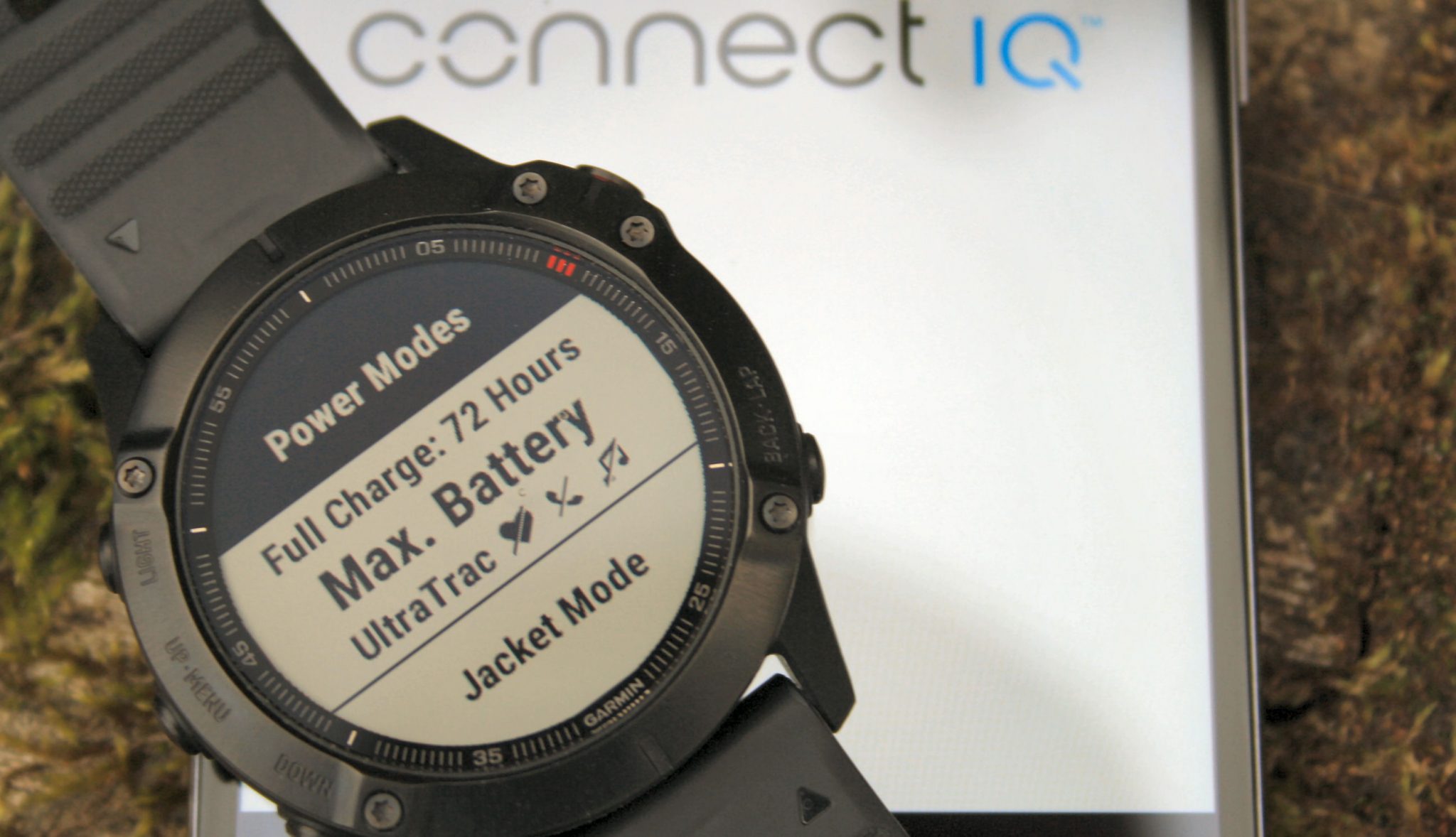 The Fenix 6 comes with JACKET mode and MAX BATTERY mode, or you can create your own battery mode choosing the to enable or disable or configure these: GNSS, music, oHR, phone, oximetry, map, display, backlight and accessories. Once created, the battery mode can then be accessed from the shortcuts.
The Fenix 6 comes with JACKET mode and MAX BATTERY mode, or you can create your own battery mode choosing the to enable or disable or configure these: GNSS, music, oHR, phone, oximetry, map, display, backlight and accessories. Once created, the battery mode can then be accessed from the shortcuts.
Not using GPS, screen and music should make the biggest differences to battery life.
Other Battery Points
- I tried to use battery mode to create a ‘normal’ battery mode which disabled seldom-used features like MAPS just because I didn’t want them, but couldn’t seem to get that to work. Oh well.
- These battery modes can be enabled during an activity. So if you had 1 hour left to go on your Ironman and a rapidly depleting battery, you could selectively disable the features to ensure that you got a complete recording of your special day.
- I’m not seeing anywhere near the claimed battery life of the Fenix 6 Pro – ballpark 4 days with 6-8 hours of workouts (which is fine for me). No doubt I have text messages pinging in, PulseOx blasting away and too many sensors enabled when I exercise. So the first point here is that the Garmin battery lives will almost certainly BE CORRECT but only when you have certain features disabled. This brings us to the second point that we all DO enable everything as much as we can (well, I do) and so the battery management modes and SOLAR boosts may, in reality, turn out to be handier than we think right now. Just a thought…
Expedition Mode – Garmin Fenix 6 Review
The new ‘expedition mode’ is a sports mode where GPS is enabled once every 15-90 minutes and which can be automatically disabled after sunset.
GPS is a significant consumer of the battery and, thus with infrequent GPS usage, you can see the impressive durations that can be delivered in the earlier table. On the downside, your GPS track will only record points a mile or two apart, depending on how fast your hike.
Special Feature – ClimbPro
When you are following a route, that route will usually know the upcoming elevations. ClimbPro is useful for hiking and perhaps fell running in order to automatically check progress up the current hill with various colour-codings for various grades. I’ve mostly used it on the latest Garmin Edge devices and that’s quite a nice feature for a handlebar-mounted device with a large screen for when cycling.
Note: The ClimbPro shown above is the old version. Probably when you read this it will be updated (ping me to change)
Special Feature – PacePro for Running/Hiking
Like ClimbPro, PacePro only works when you are following a route and, again, takes advantage of the upcoming hills. With its knowledge of the hills, it can give you a target average pace for a certain race time for each mile/kilometre/hill of the race. It can also factor in a positive or negative split to its calculations.
 Functionality seems to have already been improved on this whereby pace changes can be triggered as the terrain changes from uphill to downhill but, on the examples I’ve seen, pace will not change if, for example, a downhill turns into a STEEPER downhill. But I’m sure Garmin will add that. ie Garmin seem to average each climb and descent.
Functionality seems to have already been improved on this whereby pace changes can be triggered as the terrain changes from uphill to downhill but, on the examples I’ve seen, pace will not change if, for example, a downhill turns into a STEEPER downhill. But I’m sure Garmin will add that. ie Garmin seem to average each climb and descent.
On a flat route, even the negative/positive split functionality by itself could prove VERY useful.
This might also be more useful over much longer durations of hiking to ensure that you are on track to reach certain predefined waypoints.
Images above show PacePro on GCM
Special Feature – Running With Power
This is one area of running that developed a lot in 2018, then somewhat technically stagnated in 2019 but will continue to grow in usage over the next few years as evidenced by STRYD starting to release many new platform features in Q3.2019.
A running power meter is a proxy for effort. Theoretically at least, your best possible effort will come from an evenly paced run with equal efforts uphill and downhill.
 It’s cool. I use POWER a LOT. It’s not perfect but has its uses. Many cyclists love running power; as the more techy cyclists amongst them already have a thorough understanding of power from the ‘proper’ power meters on their bikes – albeit the power meters work differently.
It’s cool. I use POWER a LOT. It’s not perfect but has its uses. Many cyclists love running power; as the more techy cyclists amongst them already have a thorough understanding of power from the ‘proper’ power meters on their bikes – albeit the power meters work differently.
But you need more kit to take advantage of this 🙁
The cheapest way is with an HRM-RUN/TRI/PRO chest strap that supports Running Dynamics. The RD-POD will be cool as well. A properly calibrated footpod will further improve accuracy and hence usefulness. If you already have that hardware then go forth and download Garmin’s free Running Power (GRP) app. Be wary of the accuracy of the inputs from your sensors. Rubbish In…Rubbish…well, you know the rest.
Taking running with power more seriously you WILL go for STRYD. More options may emerge in 2020, indeed I HOPE Garmin do a power pod of some sort. There are LOTS of resources on this site about the Running With Power devices and apps. I’ll link to some in a minute but this table is a good place to start.
If you are intrigued to know more, the STRYD Bible should answer a lot of your questions. Yep, it’s VERY long as well. Sorry 😉
Garmin Fenix 6 Review + Garmin Running Power
Garmin’s Running Power ‘algorithm’ is free to use but is dependent on the accuracy of inputs from several sensors. Whichever vendor’s Running Power method you choose, you will NOT be able to move your data to another platform later on as the numbers will NOT match.
I encourage you to give running with power a go. Try out the free GRP CIQ app. FWIW I use STRYD every week and consider it ‘accurate’.
Special Features – Firstbeat – Physiology Insights
There are LOTS of Firstbeat metrics in the Fenix 6, we’ve already touched on some earlier. In fact, there are so many that it warrants a separate post partly to reduce the size of this main Garmin Fenix 6 Review but also because the Firstbeat stuff tends to be a polarising feature set – you either love them and buy a watch partly because of them or loathe them.
Special Feature – PulseOx
If you don’t already know exactly what SpO2 is, then it almost certainly will be of no use to you whatsoever. Jump to the next section.

PulseOx/SpO2 is totally different to Moxy/Humon Hex and their measurement of MUSCLE oxygen..
OK – it’s blood oxygen monitoring which has medical applications as well as applications for determining the degree of acclimatisation for high-altitude climbers. YOU are fit. It should not be below 95% and probably not below 97%.
Tip: disable the feature, save your battery. It eats a fair amount of battery.
Garmin Connect – App & Platform
Garmin’s app and online platform are one of the better sport and activity offerings. I like Fitbit’s and Polar’s too.
The Garmin Connect app is comprehensive covering; sleep, steps, sports, day views, trends, and physiological stuff. It’s all there and more besides. There is SO MUCH data in the app that sometimes it’s not always so intuitive to know where to look to find the information you need. But it is there. Somewhere.
All your data is sync’d to Garmin Connect online and the same sort of thing is available on that platform. And it’s all free.
Here are several screenshots of the app from a few months back, including one of my GPS accuracy test route. More on that later.
Those of you who have more than one Garmin device will notice that your physiological recordings are starting to be synchronised across the Garmin ecosystem using Physio TrueUp on supported devices – of which the Fenix 6 is one.
Garmin Fenix 6 Accuracy
There are many aspects of the Forerunner Fenix 6 that will be accurate to varying degrees. For example, the steps and stairs climbed will be accurate enough for the purposes that the data is put towards and Garmin’s sleep analyses are well-intentioned but I’m near positive, from other research, that they will not accurately represent true sleep stages. But I have no way to back up my assertion (and neither would Garmin to the contrary – same applies to Polar, Fitbit, etc).
So that leaves us looking at the accuracy of Elevation, GNSS/GPS and heart rate. People tend to ‘Poo Poo’ the accuracy that other people seek from devices when that aspect of accuracy is not important to them. For example, the small minority of cyclists who use power meters (of which I am one) might have a vocal sub-minority that tend to look down on those seeking GPS accuracy or HR accuracy. Runners, in response, might cite the almost certain fact that there are a VASTLY greater number of runners looking for GNSS/GPS accuracy than there are cyclists looking at the differences of between 98-99% accuracy in their power meters.
Similarly, for all its flaws, heart-rate based training is used by a VERY LARGE number of people across many sports. I use heart rate a lot too and I am mostly aware of all its potential inaccuracies. However, one thing I’m mildly concerned about is that many people are probably using optical heart rate and blindly assuming that the readings are always correct. They really are not.
Here’s a link to some detailed insights into various aspects of the Fenix 6’s accuracy and that link will be updated over time. Just skip the link and continue reading where I’ll summarise that post.
Garmin Fenix 6 Pro Accuracy – GPS, GLONASS, oHR and Elevation
So with all that in mind. Let’s look a bit more at the accuracy of GNSS/GPS/GALILEO, heart rate and elevation/altitude.
Garmin Fenix 6 Review – GPS Accuracy
The Fenix 6 is generally fine for most people but runners who seek accuracy will be disappointed although perhaps not surprised. Galileo seems broadly similar to GPS-only in many scenarios and, in any case, is work-in-progress as Garmin endeavour to improve it. Both Galileo and GLONASS do seem sometimes better (eg in urban areas). As of September 2019 the Fenix 6’s overall GPS accuracy is similar to, but not better than, the accuracy of the previous Fenix 5 Plus, which was ‘good’ but not excellent.
Note: I am perfectly happy with the post-workout tracks that Garmin produces FOR ME. I can’t see ME ever relying on GPS-PACE from the current crop of Garmin watches and I will always instead use a calibrated running pod.
Garmin Fenix 6 Review – Heart Rate Accuracy + Functions
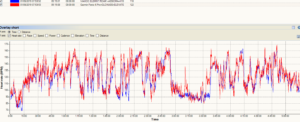 So far, I am tentatively happy with the accuracy and functionality of the ELEVATE sensor on the Fenix 6 which seems SOMETIMES NOTABLY BETTER than the Fenix 5 Plus…and sometimes NOTABLY WORSE. Resting HR is good, retrieving cached HR from a swim set is good, pairing to ANT+/BLE chest straps is good, broadcasting the oHR seems good, running and cycling HR performance is mostly good and the new oHR whilst swimming is OK. As always, bumpy cycle rides and high intensity runs present the ELEVATE HR sensor with some challenges that it hasn’t fully risen to yet, IMO.
So far, I am tentatively happy with the accuracy and functionality of the ELEVATE sensor on the Fenix 6 which seems SOMETIMES NOTABLY BETTER than the Fenix 5 Plus…and sometimes NOTABLY WORSE. Resting HR is good, retrieving cached HR from a swim set is good, pairing to ANT+/BLE chest straps is good, broadcasting the oHR seems good, running and cycling HR performance is mostly good and the new oHR whilst swimming is OK. As always, bumpy cycle rides and high intensity runs present the ELEVATE HR sensor with some challenges that it hasn’t fully risen to yet, IMO.
Caveats: cold weather, bumpy roads, high levels of exertion, how you wear your watch, wrist movement, technical design factors, your blood flow and other physiological factors can all lead to poor oHR results on the wrist. If you don’t want to wear a chest strap for accuracy then wear an optical armband instead like the Polar OH1+ (reviewed here).
Summary: If you want ‘guaranteed’ accuracy, don’t use oHR on the wrist. Or keep your wrist very, very, very still…hmmm.
Note: I am certainly NOT intending to use wrist oHR for my personal HR needs. Take that as a recommendation to avoid ANY oHR reading from the wrist from any device.
Garmin Fenix 6 Review – Elevation & Elevation Accuracy
#Sorted
Garmin’s maps on the Fenix 6 contain a Digital Elevation Model (DEM) which assigns elevation values to GNSS location points (probably ‘lat/long ranges‘ in reality). By default, the DEM is used continuously during the workout and can also be auto-calibrated at the start of the ride or adjusted further with the barometer.
Go to: Settings >Sensors & Accessories>Altimeter>Auto Cal>”Continuous During Activity” or “At Start”
The performances I’ve shown, below, seem as near to perfect as they need to be. Certainly, for my meagre needs, the elevation ‘problem’ is now SOLVED, IMHO.
Caveats: There is always a BUT..and here it is…well, there’s two:
- For elevation to be correctly determined by this method then an approximately accurate GPS fix needs to be obtained. I would say that in >99% of use-cases this will happen. However in cities and on steep slopes then there may be issues in the GPS fix and hence elevation errors may ensue.
- Similarly, the DEM model itself will sometimes be wrong and, again, that is most likely to be in mountainous regions where the satellites have not properly ascertained the elevations or your precise position.
Google=> here
Clarity: Garmin’s DEM is NOT like Suunto’s FusedAlti which combines a 3D-GPS fix LIVE FROM SATELLITES and barometric changes (Garmin is better for almost all of us, IMHO).
Note: I have few personal needs for accurate elevation. Garmin’s DEM-based implementation MORE THAN satisfies ALL my ELEVATION needs for ALL my sports.
Garmin Fenix 6 Review Alternatives – The Competition
There really is no viable competition to get anywhere near the same sort of level of sporting and smart functionality that you will find in the Garmin Fenix 6 reviewed here. Certainly NOT in the smaller Fenix 6s size of the product. And the new Fenix 6 range is clearly Garmin’s ‘smartest’ product with the broadest feature set…ever.
Maybe the Apple Watch is smarter? Maybe. But it’s not as good at sports nor battery life.
The nearest competitors are these
- Garmin MARQ Athlete/Forerunner 945 – it’s the same product but different shell (expensive/light)
- Garmin Fenix 5 Plus series/Forerunner 935 – kinda the same as the F6 with some slightly older sensors and a less good battery and screen. Fewer features (but not many)
- Suunto 9/9 Baro – Perhaps a bit more high-end outdoorsy, some might trust the Suunto’s sensors more
- Garmin Instinct – It’s a well-featured outdoor watch, it just doesn’t look good and doesn’t have onboard maps (for starters). Better in conjunction with a smart phone perhaps? This or the Fenix 3 would be your cheap(er) alternatives.
- Casio WSD-F30 – perhaps the only WearOS alternative. It’s probably a tad over-priced for what it is. As long as you have a battery pack and a smartphone to accompany it, you should be good.
Garmin Fenix 6 Review – Bugs & Stuff
I am often highly critical of Garmin for a lot of things and you might think a good place to put the criticisms and bugs would be in a Garmin Fenix 6 Review. But bugs get fixed and reviews tend to stay relatively static so I will refrain from being too critical here of bugs.
I’ve had a few rebooting moments and a few moments of madness with the Elevate HR sensor but it’s generally been a smooth and ACCEPTABLE ride with a brand new product
I have absolutely ZERO relationships with Garmin other than being a consumer, like you, so I can be critical. Yep, no PR samples here, no PR info here at all. Having said that you should know that the Fenix/945 range is Garmin’s Golden Crown. So if there are bugs Garmin ABSOLUTELY WILL MOVE HEAVEN & EARTH to fix them. Garmin has the developer resources to do that.
Price, Availability & Discounts
There is generally good availability globally now. The issue is with the precise availability of the model you want, there are so many variants that nobody will stock them all. You could try Garmin’s sites directly or my partners, the larger of which are WIGGLE in the UK and PowerMeterCity in the USA, both linked to from this image:
RRPs vary widely over the full range like this…
Fenix 6X ($749.99 – $1,149.99), Fenix 6 (599.99 – $999.99), Fenix 6s ($599.99 – $899.99) Eu/£ similar, with higher prices still for Solar models
Direct discounts are generally not allowed by Garmin, although you might get 10% from time-to-time as 2020 progresses.
The bundles can be a cheap way to get a chest strap if you need one.
Garmin Fenix 6 Review – Final Points
If like me, you want the best watch for your sport and activities then you will have already, in your mind, bought one of the Fenix 6 models. It’s a proper hiking watch, a proper triathlon watch and a proper ‘any other sport’ watch. You kinda knew that anyway, I’m sure. If you have the cash to burn then get the MARQ EXPEDITION or get the MARQ ATHLETE if you are more sportily inclined.
If you have a Forerunner 935 or Fenix 5 (non-Plus) then there is a lot of reasons to upgrade. If you have the Forerunner 945 there is zero point in getting a Fenix 6. But you Fenix 5 Plus owners could justify a new watch if you really needed longer battery lives and slightly larger screens. I don’t think the new Fenix 6 software features will give many of you a real incentive to upgrade but perhaps the improving interface and the newer internal hardware components might tempt you with a pseudo-illusory nature of ‘something better and faster’
You certainly won’t get much better onboard sensor performance from oHR and GNSS but I think we will see both improve over the next year



 Training or Racing – Triathlon Specific
Training or Racing – Triathlon Specific
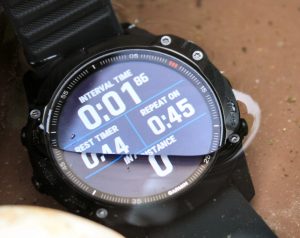


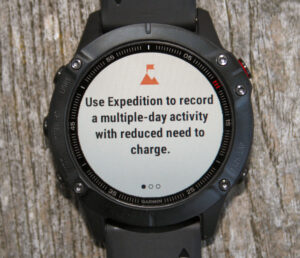
 Music – Press and hold the bottom the left button
Music – Press and hold the bottom the left button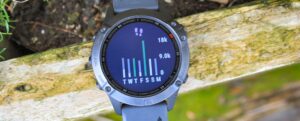
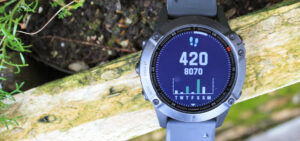

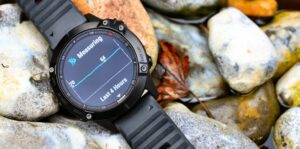
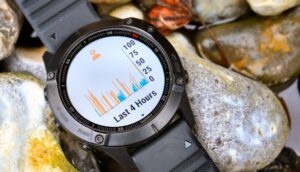
 A quick Stress Check
A quick Stress Check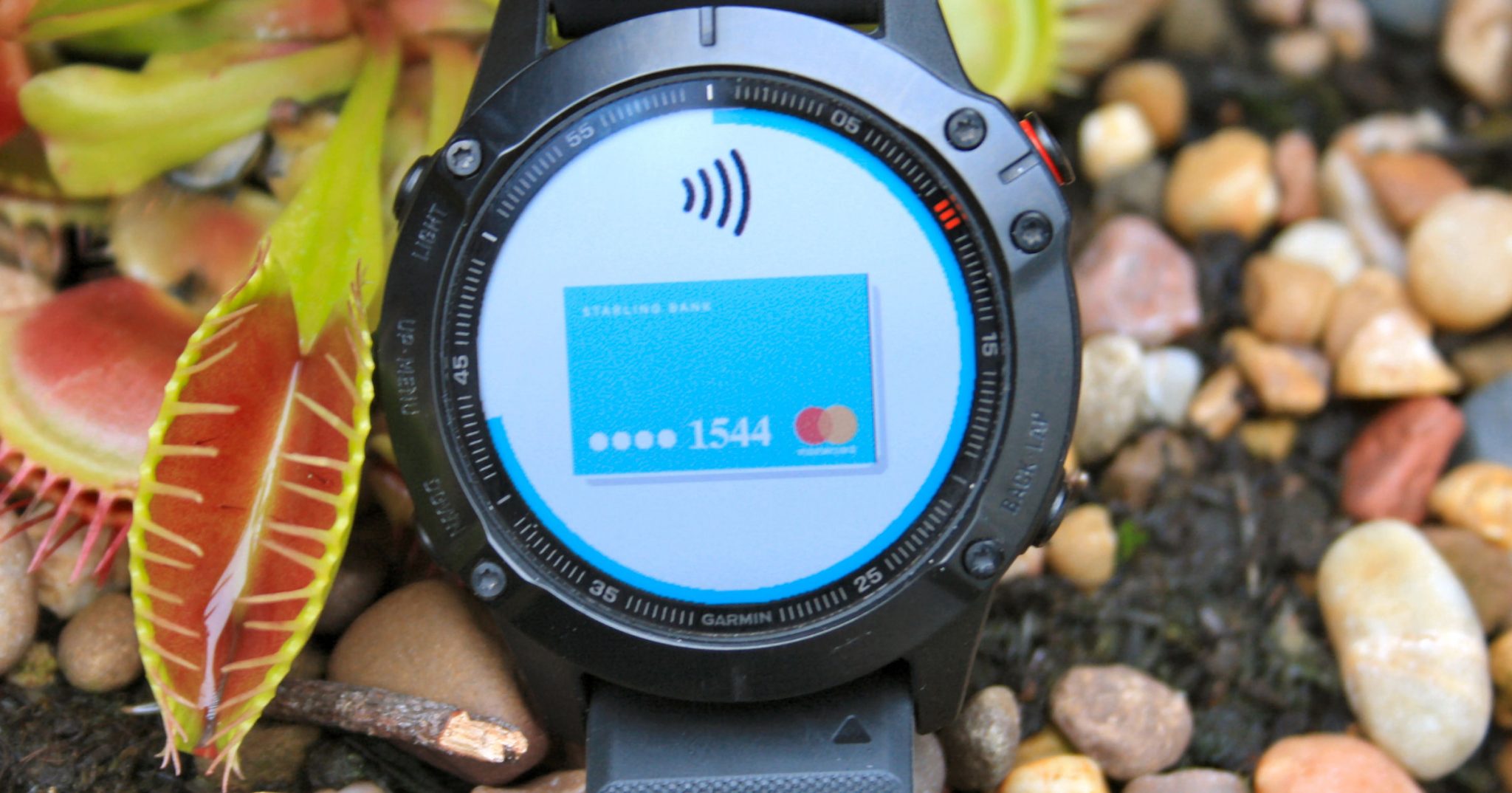 Special Feature – Garmin Pay
Special Feature – Garmin Pay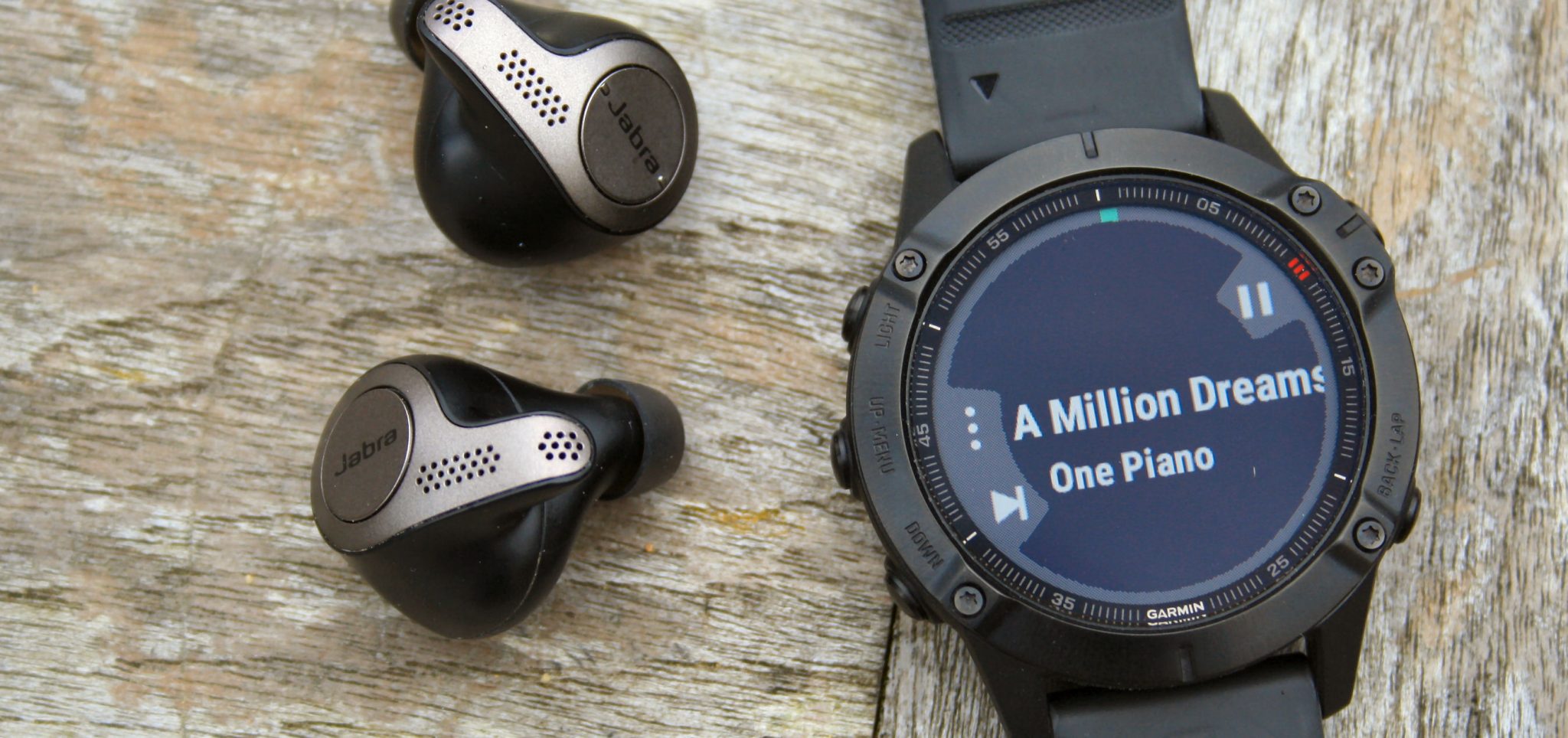 Special Feature – Music
Special Feature – Music
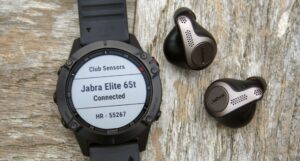
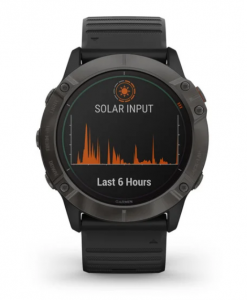





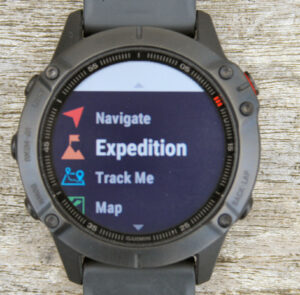
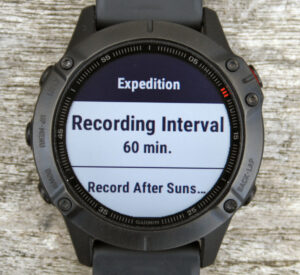





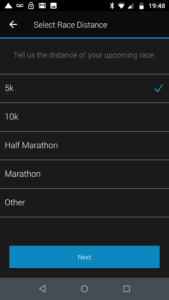



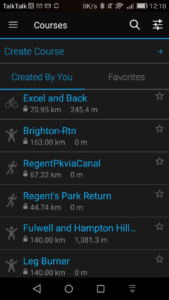
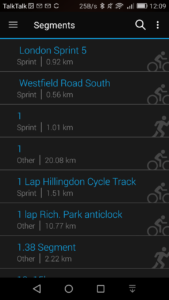

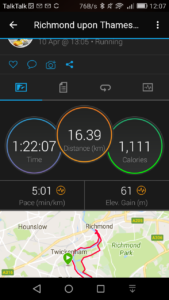
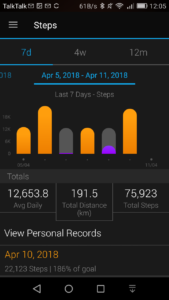
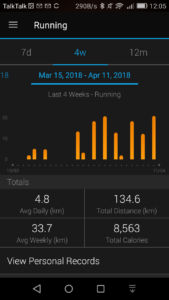







Fantastic read, nothing else to say
Thank you for your kind words Jon
Just one extra info about PacePro. You can have it create for you different paces based on altimetry instead of every km or mile. If you use that option, the watch will change the recommended pace when altimetry changes (not every km/mile), eliminating (theoretically) the problem you mentioned when a certain km/mile goes both up and down. But super detailed info on the watch nevertheless. Congrats.
can you explain more?
What I see is that: yes, it can create paces for different grades but that they are averaged out per km/mile. All you see is the total km/mile figure. then within that km/mile how much ahead/behind the km/mile target you currently are…as shown in the images
On web garminconnect you create the course you want to use PacePro with. Not sure if you can do it on the app. Then when you play with positive/negative split and the way you want to attack hills, the web version offers 3 options: pace broken into kms, Pace broken into miles, pace broken into chunks of arbitrary distances based on altimetry. In that case, you can have one segment that is 3.7km long with suggested pace of X, then you go up for 800m and the suggested pace is Y, then for the next 7.2km (flat) another pace and so on and so forth. Full disclaimer; I haven’t received my Fenix 6 Pro Sapphire yet so I haven’t tested it yet; but I intend to run the Buenos Aires marathon on Sept 22nd using a PacePro plan (and lots of “feeling” to ignore it in case I see the PacePro is hurting instead of helping). As I still have to get the watch and also travel to Argentina (I’m from Brazil) I won’t have much time to experiment with it before race day.
ah OK, thank you very much for that.
which explains it.
i only ever used the app, which i don’t think works as you describe. #ironic as i almost always use the web version for everything!! I shall visit gc online for a good look.
tip: if you are relying on a device for pacing then you need to know how close to large building you will be. i imageine you will be, i imagine the pace will be worng and hence the pacing wrong. in a built up area you’ll need a footpod to stablise the pace.
you might still have problems with pacepro if it thinks you are off-course due to gps being thrown off by the buildings (IDK exactly…but it’s a risk)
Update. I an example. My planned “arbitrary length chunks” for Buenos Aires Marathon based on altimetry. Note that it’s not broken into exact kms but rather into chunks that should be run in a certain pace. https://drive.google.com/file/d/10HwVnPFegptmJtGoS111MKeE372vqkIW/view?usp=drivesdk
as per the other email, yes i will look at this.
Yes I see that on GC and GCM. Either I’d missed it or it’s new functionality. I can’t seem to get it to change pace if downhill turns to STEEPER downhill. it seems to work from peak to trough…but that’s ok.
weird that forerunner 945 isn’t listed as alternative.. it’s the closest as release date and feature wise.. (also a bit closer on the price point than garmin instinct)
definitely a conspiracy. (added ty!)
lol thanks 😁
(1) Does anyone know that how many downloadable watch face can Fenix 6 handle? I learnt that its storage for watch face is less than 10 and dynamic controlled by firmware instead of unlimited due to large mp3 memory space after I rang Garmin Taiwan.
(2) I am eager to see Beidou shown in the next GNSS chip. Galileo is just decoration, it’s useless.
v3.10 Asia firmware update already added Beidou capability.
Maybe stupid question, but where can I find “Fitness age (Connect app) “?
it’s on the vivoactive watch not the fenix watch IIRC.
BUT it should be on the app under Performance Stats> VO2 Max. It might not show there if you do not already have the correct devices linked to your account to enable it. It shows on my app.
yes, on the connect app i have seen it, but I was surprised that you have it on fenix 6 watch.
thank you
review says “Fitness age (Connect app) – the one good thing about getting fitter and older is that this will tell you how younger than the true age you really are. Maybe 😉”
Your comment “you can also buy a tiny rubber cover for the watch’s port.” I wouldn’t! Had one of these rubber port bungs and instead of keeping the dirt and muck out, it keeps sweat in, corroding the battery connectors. Luckily the warranty covered corroded charge connectors but I’m not using another one.
somebody else swore by them, i take your point. i’ve never used them myself.
I’ve had one on my 5+ since I got it right when they came out and my connectors are pristine. I have heard others say as you do, though. I live in a dry climate and I only take the cover off to charge in dry, at-home conditions so might depend on your use model/environment.
Of course I’m a sucker and a nerd so my ridiculously expensive Solar is ordered and due in October even though my ridiculously expensive 5+ is only a bit over 1 year old.
do you know of any discount codes for the fenix 6?
anyone who discounts a new Garmin will have supply withdrawn by garmin. they don’t allow it (assuming USA) and the reality is similar in other countries.
for a new product demand is greater than supply usually for garmin, so economics says little or no discounting. you can get coupons and other such things to use against future purchases eg if you buy from REI you get an annual rebate in the usa and wiggle in the uk/eu will put you on a platinum membership after buying so you get some pretty big discounts on stuff afterwards (that’s what i do for me..often well over 12%)
hello,
one question About the 6x pro:
Is it possible to enter Navigation points/Coordinates (i mean only numbers-for example-points that Were taken out of a paper map) directly to the watch (not with the app or phone/computer)???
THANKS VERY MUCHֱֱֱֱֱ!!!
you can enter a location with a N & W pair of numbers, as degrees/mins/secs
ok!
can it possible to enter numbers of points and make a navigation course?
THANK YOU VERY MUCH!!!
“All of the Fenix 6 models now have inbuilt global full-colour TopoActive maps.”
According to Garmin’s website, the base Fenix 6 model does not have maps (nor music and wifi).
thank you for the spot, I had that info in the attached specs details and I will change above
Hello;
That’s a pretty comprehensive review of the device however my feeling is that it’s just one part of an ecosystem the other part being Garmin Express Base camp and web usability as well.
I have the 6X pro and a Mac computer and the computer does not recognize the watch as an external hard drive like it does on the 5X.
Neither does base camp recognize the watch (Maps) in order to plan routes using base camp which is a bit of painful program in and of itself. so there is no reason to buy any of the online 24K or 100k maps on the Garmin website it seems that they’ve kind of shot themselves in the food as far as Mac users and purchasing additional products. But it is superior to the course builder that is the web-based thing which I consider to be quite weak in building hiking trails mountain biking trails etc there’s only a couple of way points and they intermittently come up on the watch and they’re actually not called waypoints they are called course points.
Also since the Mac does not recognize the watch you can’t install any beta updates like the new sensor hub update or GPS update or whatever you have to use a windows computer. I talked to Garmin about this and they just said that it has something to do with the Garmin pay application security I’m not sure why it would be different on a Mac than on a windows computer.
so I’m not trying to criticize but I think it would be useful to integrate a review of the watch to include the entire ecosystem meaning How it functions and interacts on that web-based application and also basecamp which are kind of the three legs of the stool for the watch so to speak.
Jon
ty for the detailed feedback.appreciated and taken in good spirit.
external HDD – yes this is the same on windows and is a PITA. There is no workaround. I have asked and checked ad infinitum (actually there is some paid-for software on windows that will add it as an external HDD). It does this for all Garmin music-enabled devices IIRC
yes basecamp is fairly old. i very rarely use it.
if you’ve not tried course builder recently give it a go. I find the popularity routing good for cycle routes.
I’m up to 11000 words….my fingers have worn out. i’ve no plans to add any more sections…sorry! (unless massive demand)
This is because Garmin decided to change their storage protocol from a mass storage USB device to Media Transfer Protocol with all the watches that feature music.
Mac doesn’t include a MTP client in Finder by default. There are several possible solutions but the simplest thing to do is get the free Android File Transfer app for Mac. That will allow you to copy firmware and maps.
https://www.android.com/filetransfer/
Hey great review! Quick question – what is the name of the watch face in the section “Why You Would NOT Buy The Fenix 6”, with the blue/white theme and plenty of notifications/data fields?
crystal. it might not be publically available yet.
see: https://the5krunner.com/2019/05/08/garmin-945-what-no-apps-side-loading-comparison-photos/
About Garmin Running Power …
Do you actually have this on the Fenix 6?
The data field in Connect IQ is not compatible with the Fenix 6 and can’t be installed.
you can copy the .prg files from the apps folder of one device to another. that’s watch faces, apps and all. I’ll send them to your email, i’ve not tested the GRP per se, but it does seem to load up
see: https://the5krunner.com/2019/05/08/garmin-945-what-no-apps-side-loading-comparison-photos/
Hey,
do you have Vivoactive 4 laying around? I would like to side load hydration widget, but I can’t find a way how to download it.
https://apps.garmin.com/en-US/apps/6cb03839-6c01-42ac-8acf-6c54801cc9ae
Thanks!
sorry i didn’t get the va4….all these devices cost a LOT of money when added together. I can’t afford them all and i dont get ANY Garmin freebies.
Wow…..Thankyou for this informative review…..When your going to spend over $1000 au this information is vital…..had my 6X Pro for nearly a week……so much better than my old Apple Watch.
I’m a triathlete and I don’t do outdoor activities. I’ve been using a 920XT for several years and I’m going to buy a new watch, 945 or Fenix 6 Pro.
Is the Fenix 6 very heavy? I feel that those 30gr can feel uncomfortable.
Are they worth the $100 difference with the 945?
Excellent review! Thank you!
it’s noticably heavier than the 945/935. i wouldn’t say its too heavy but i’m sitting here noticing it as i write and will revert back to the 945 soon.
define ‘worth’.
go for the 935, that’s a bit more stable.
if you want all the fancy music/maps/payments then instead get the 945 (i like the music and payments…maps are good but i dont use them).
really the extra for the fenix is about the ruggedness of the watch.
But the 945 has the stronger GORILLA glass (like the F6) than the 935 so….get the 945
This is really helpful. Thank you.
How many Connect IQ datafield can you use?
2 (F6 Pro)
#rubbish
I can’t believe! With this kind of processor, i don’t think that computation is a problem! also F735xt have 3 CIQ data field! (but Fenix 5 plus only 2…)
maybe it’s only a temporary limit
maybe it just executes the CIQ code very, very (very) carefully 😉
I agree this is rubbish. But maybe they have decided it is the magic number and have spent their CPU and memory budget on being able to decode music during an activity instead of futzing with the CIQ runtime container. There is an advantage to having CIQ be the same and debugged across the largest possible set of devices.
Hi
Thank you for the great review! What’s your opinion is it a better proposition than Polar’s Vantage V?
Thanks
depends on the end-purpose
flow+vantage is worth considering if you primarily want a multisport watch
if you want electronic payments, maps hiking and snowboard support etc then clearly you go for the fenix
cost is a factor too. Polar vantage M is often well-priced
Thanks, the purpose is sport(s) only
HI,
Random question: What is the watch face on the F6 on the header photo?
crystal
Thank you. Not available yet for F6 yet, right?
i’ll email it to you.
see: https://the5krunner.com/2019/05/08/garmin-945-what-no-apps-side-loading-comparison-photos/
It’s the one in the article under why you should NOT buy a Fenix 6
https://the5krunner.com/2019/05/08/garmin-945-what-no-apps-side-loading-comparison-photos/
“If you choose TRUE North then I’m not entirely sure how that is determined without knowing how to set the compass declination.”
It´s calculated from a map of the earths magnetic field on the devices
https://support.garmin.com/en-IE/?faq=VknPCAtoQz56GhIstxTzX8
interesting, thank you
I will add info above https://en.wikipedia.org/wiki/World_Magnetic_Model
so i assume this is used to set declination to yor GNSS point (an update to WMM is due soon BTW)
Great review, thank you! Might have missed it – but what model and color are in the pictures?
6 pro
HI,
I have a Fenix 5 Plus and I love it.
It’s the best SMART Watch and fitness tracker watch I’ve had and I have had a few, from Motorola, Samsung and Fitbit.
Questions
– Is is worth upgrading to the Fenix 6.
– Is the GPS tracker improved and accurate
– Has the MUSIC Player improved
– Has the Bluetooth Music Connection (Headphones) improved over the Fenix 5 Plus
– As the Heart rate sensors have been changed, is it improved, quicker and accurate over the Fenix 6
hi
to answer your points
– probably not. depends what is important to you.
– no not really, no but it depends for what purpose
– same?
– same, i think
– yes probably. still not as good as chest strap and still unacceptable for some people
Thanks for your quick response.
Whats’s your thoughts between the two, Fenix 5 Plus and 6 watches.
As the only issue I have with the Fenix 5 plus is the Music Bluetooth connections. I use the Jabra Active 65t and they are great, but sometime it takes a long time to pair to the 5 plus and during my run it would loose connection for a short or long period.
Also when view the GPS tracking after my run on the Phone it seems to be a little out not a lot.
And my other concern is the heart rate monitor, On the 5 plus is great and wondering that the 6 has less sensors is it as accurate or better.
some of those are essay questions…my reviews will address your points
jabra – i have no issues when watch on right wrist
gps: https://the5krunner.com/2016/11/05/test-route-for-gps-devices/
ohr: wrist ohr will NEVER be as good as a chest strap. you have to decide what level of accuracy you want
Thank you so much for your prompt response. also just to say WHAT a FANTASTIC Review.
Keep up the great work
Thank you
thank you!
and thanks for any support via the buying links. jsut come back and click one before you start your christmas shopping 😉
I love the watch, 6X Pro, and the comprehensive review. Simple question I can’t figure out, how do I get my text notifications to show on the watch like I did on my 5? I see call notifications but not text.
Thanks again
Can anyone comment on the Fenix 6x GPS accuracy whilst Open Water Swimming. I don’t want to have to tow my watch whilst OW swimming, id rather wear it on my wrist to determine other personal metrics
I don’t mind if its a few meters inaccuracy, but the Fenix 5x accuracy is v poor, often reporting me in the middle of the lake (nearly accurate) one moment then on land the next, therefore having no overall accuracy of distance swam
As with an edge you can ride a saved course on a indoor trainer, can you do that with the fenix also?
no the fenix cannot control power levels on a smart trainer that needs ANT+ FE-C (fitness equipment control) which is MORE than just ANT+. so thats the feature you need to look for. i dont think any watches have that
Does anyone know if Garmin tweaked the Body Battery since the 945? I nearly always had a 100 upon wake up while using the Forerunner 945 but the Fenix 6 rarely 100 and seems to track my feeling more than the Body Battery did on the 945. Thoughts?
Q – pool swim can you configure the number of data fields? what is the range of fields you can choose? can you for example just select 1 and just show ‘lengths’? my eyes are s**t and woudl be helpful if you could make the length count as big as possible
ha. eys.
yes! full customisation. the larger f6’s allow 6 fields but that wont interest you 😉 1 2 3 4 per screen is super easy to do and you can have multiple screens and there is a special REST screen and there is a special DRILL feature…it’s got pretty much all anyone needs IMHO
thank you for any support buying via here: https://geni.us/GarminFenix6
crappy eyes in conjunction with a crappy brain that cant remember how many lengths i have done 😉
does it let you post an image in the comments? would be interesting to see what it looks like with length count as s single field, thanks
here you go
https://the5krunner.com/wp-content/uploads/2019/11/Capture-27.png
my ‘other’ comments system does show images but i had to disable it as it slowed the site down too much (too many people using it..maybe…perhaps)
it’s a big number but could be bigger
dont forget that some of the fenix 6 models have a SLIGHTLY larger screen area than this one which is the 945 (same size watch but smaller bezel)
Fenix 6X Sapphire
+ Data transfer to iPhone 11 is a process typically involving reboots, bluetooth toggles, and standing on my head
+ Loses workout any time I do a cardio or strength session
+ Freezes and crashes on both ski and hike mode
Gamin has been horrible. They are willing to take the watch back, but are unable to tell me when they can replace it and are unwilling to do anything to try to fill the gap. At this point I would be happy with 10% off any other watch that can keep my data consistent while they figure out what is going on. Customer Service has proven rude and unapologetic.
I have the same watch. Sorry to hear you are having a s**t time with it.
There is no excuse for Customer Service being rude. That’s not acceptable and certainly not a premium experience.
Clearly Garmin releases new hardware well before the software is stabilized or even feature complete. I don’t like it but that practice is a rampant issue across the industry. Suunto and Polar are no better. Apple is no better.
ios 13 is part of the problem. 13.2 is better (but still not totally ok). But definitely there are issues with the Garmin firmware. You want the 4.30 production firmware with the new 4.30 ANT/BT firmware. The 4.30 ANT/BT firmware largely fixes connectivity issues with Garmin Connect Mobile on iOS 13.2 for me with an iPhone X.
I’m not experiencing any issues with saving a Cardio activity even on older firmware, so that is a sign something else might be wrong with your device, specifically. Any ConnectIQ data fields in your Cardio and Strength apps setup?
I’m actually using the 4.64 beta firmware, which I have not had any problems with.
If you have the latest firmware and continue to experience data loss, hangs, and freezes, I would try a factory reset of the device and set it up again clean. If it still continues, I think you have something wrong with the hardware and need a replacement device. Maybe a warranty exchange with your retailer?
Sorry, dude.
Great review but… for me is not clear how the GPS sampling is affected by power managment. Obviously it’s not your fault but it’s Garmin.
I mean: in best gps mode f6 give 1s (good) GPS track, but how can it reach 120hrs? Does it reduce the sampling to 60s and use the sony chipset accelerometer like suunto 9 do?
The ultratrack mode in Fenix 5 is unusable.
Would be useful a test in long battery life mode…
I cover the actual specs away from the review and in this document: https://the5krunner.com/2019/08/29/garmin-fenix-6-specifications-opinion-5-plus-comparison-review/ where it says for the 6x => “120 hours UltraTrac (+10% with Solar)”
So UltraTrac mode is used for that long battery life scenario
Suunto use an accelerometer to effectively ‘guess’ movements between infrequent ultratrac-like points. Garmin don’t do that to my knowledge.
And yes I agree that there is some, but little, use in an UltraTrac track.
No I’m not going to do a long test 😉
Thank’s for the fast reply.
All the answer are useful to decide if move from suunto 9 baro to fenix 6.
I use a lot S9 endurance battery mode (60s gps-sampling) and, with last firmware update, I’m happy with the watch.
But Suunto software lacks of a good, and integrated, tool to analyze exercises.
I don’t want move to Fenix 6 and get a good software platform but lose in watch reliability …I’m confused
garmin connect isn’t that great at analysing exercises in my opinion. i dont use it for that. although it’s good for a quick look
you can export suunto or garmin workout files easily enough to other free services eg ELEVATE (Stravistix) via strava.
if you get power data (via stryd) then there are many more possibilities to use that to derive metrics linked to true effort (proxy) ie buy stryd rather than a new watch in order to get more actionable data
Thanks for a comprehensive review! I’m considering switching from my Apple Watch Series 4 to the Garmin Fenix 6X Pro (mainly for longer trail races at altitude). Are there reasons to believe there will be a Fenix 6 Plus or Fenix 7 coming out this year? Trying to time the purchase right so that I am not disappointed a couple of months after the purchase! 🙂
I think it is safe to assume that, at worst, Garmin will be aiming for a 24 month iteration cycle.
Having said that, THIS , is the most material leak for what is coming. https://the5krunner.com/2020/01/06/garmin-at-ces-2020/ but there is no guarantee that lal of these will be in 2020.
Good review thanks. Currently wearing a 935, which I’ve cracked the screen on, so eyeing up either a 945 or a Fenix 6 Pro. I went for the 935 originally as I didn’t like the weight of the Fenix on my wrist when running. Conscious the Fenix is a bit lighter now but do you think my original logic still holds? I’m guessing the Fenix feels noticeably heavier on the wrist.
yes 945 is light enough for me.
i dont especially mind a slightly heavier watch but weight is supposedly a factor in making ohr less accurate (my anecdotal evidence tentatively agrees at times)
The labyrinthine menu navigation was the main reason for me to send the Edge 1030 Plus bike navigator back to the dealer after a few days. As another review so aptly put it, the menu navigation looks like it’s been hit by a bomb.
What was Garmin thinking, XX submenus, completely illogically structured with things that you will probably never ever need in your entire life.
Somewhere in submenu 49373 for sure there is a pizza ordering service integrated, you just have to find it.
That’s why I chose the Hammerhead Karoo 2 for the bike-navigation and the Coros Vertix 2 as smartwatch.
In addition, there are a lot of scathing reviews of the Fenix 6 on Amazon, not exactly a kick to buy this smartwatch.
yep,
sadly the 1030+ was an improvement on earlier Edges!!
I’ve used the Karoo since the start and even their menu is starting to get a bit unwieldy as they add more and more features.
most reviews don’t even consider usability of the device…just the number of features (that you wont use)
Do you consider the Fenix 6 as a good buy even today, some days before de the F7 unveiling ?
Considering discounts on it…even if I already got one and sold it after abut a year….
yes.
the price cuts are significant.